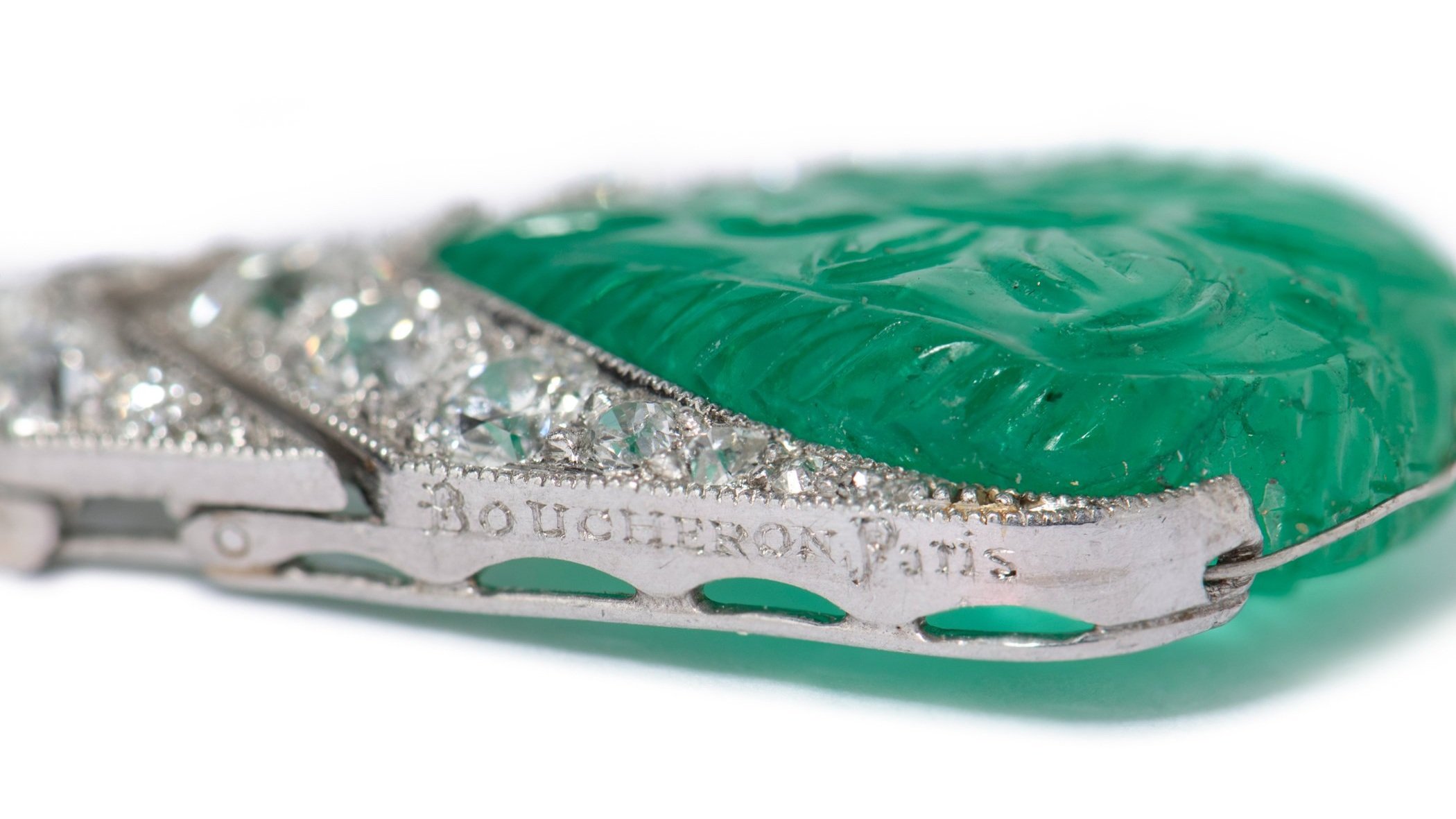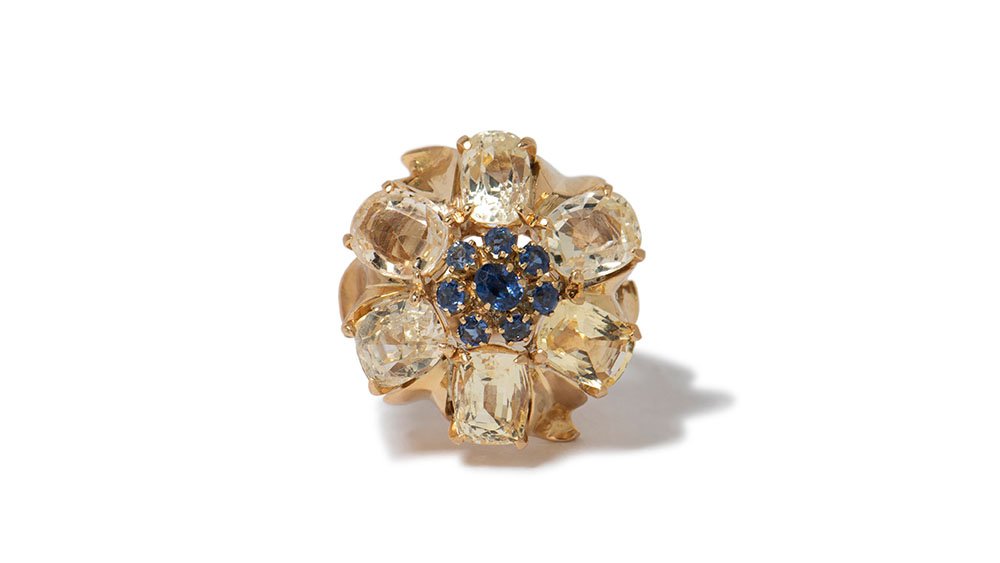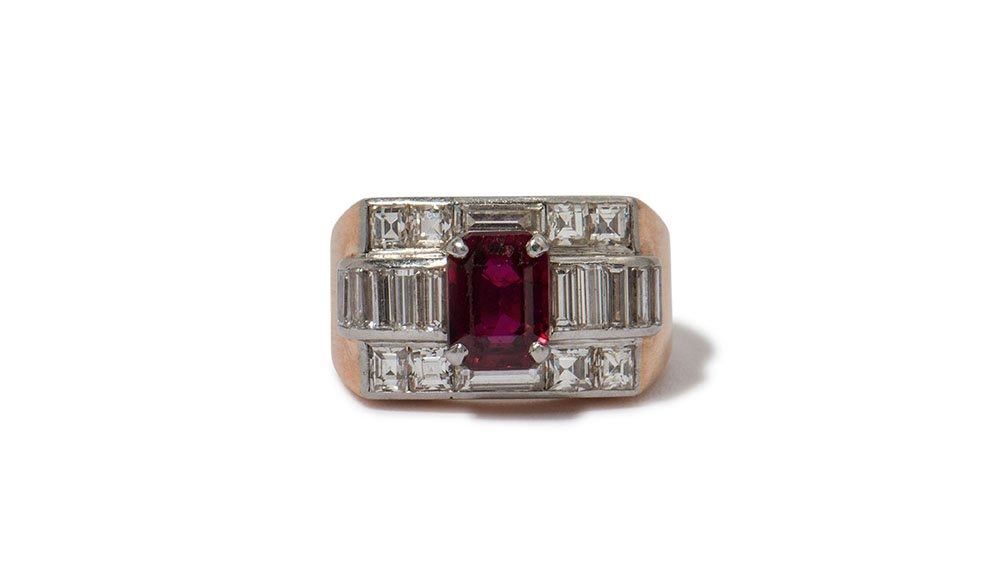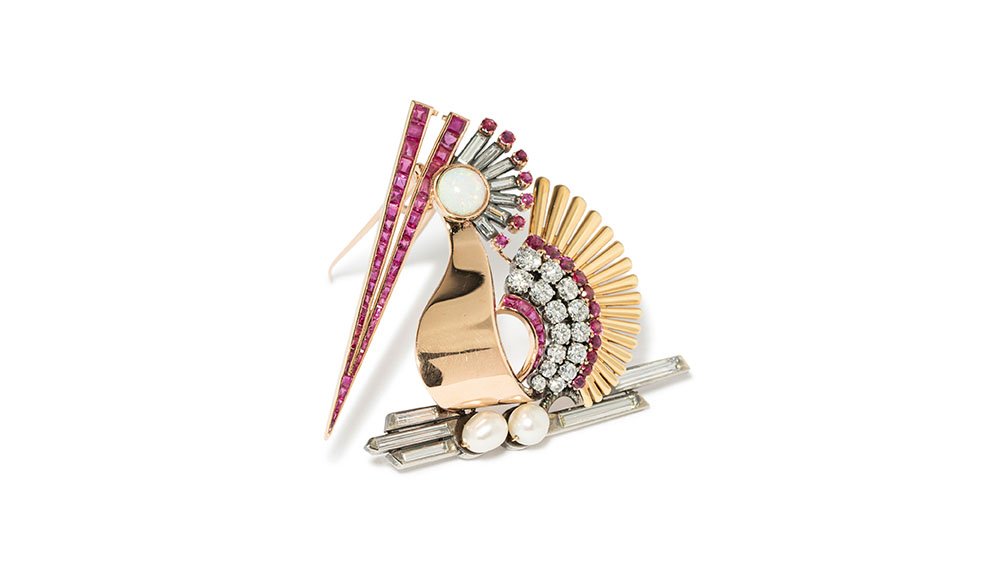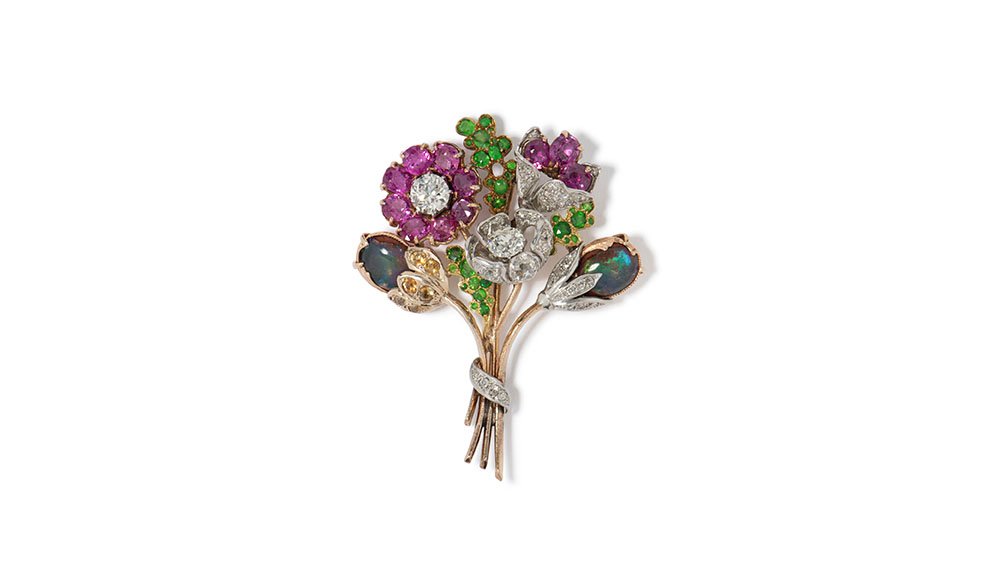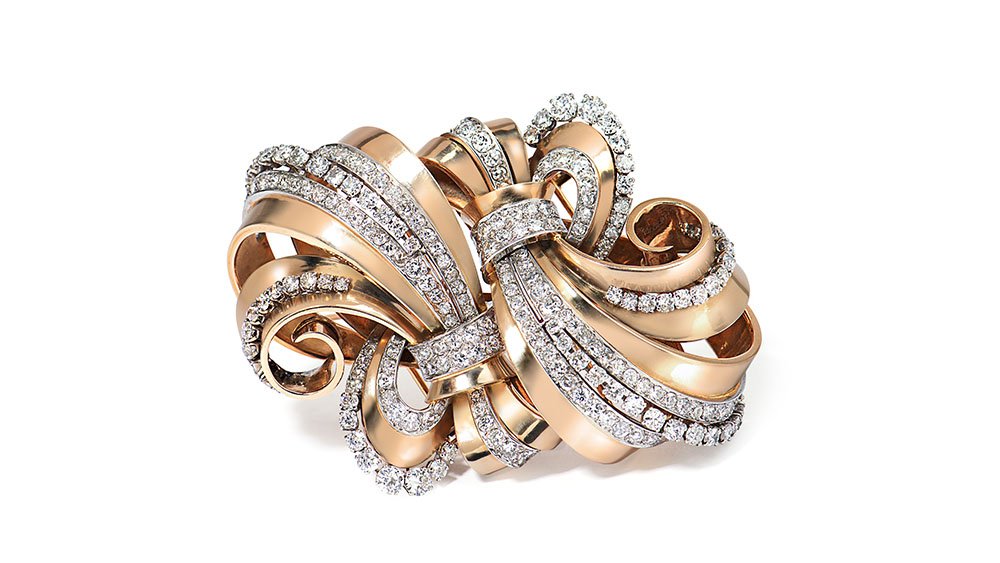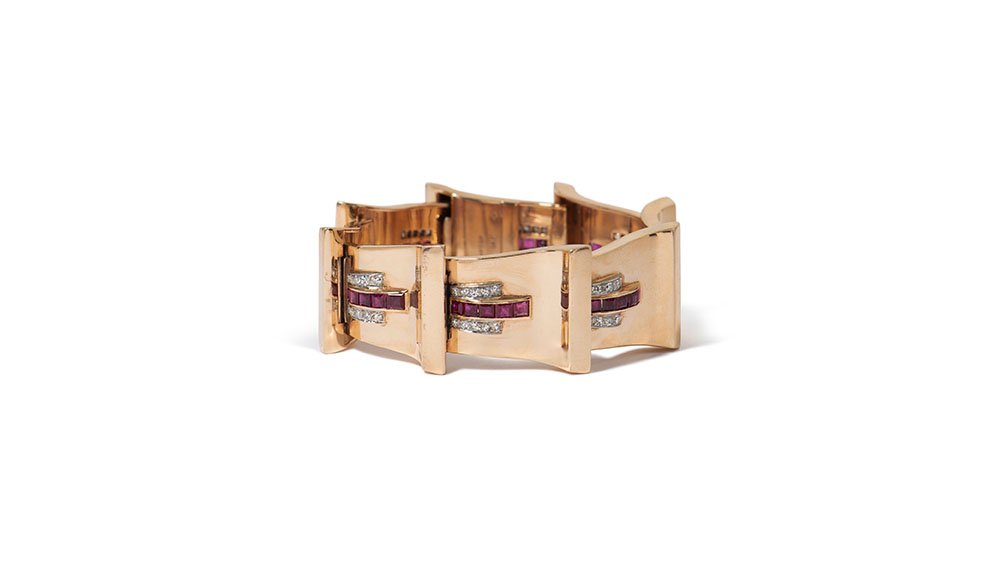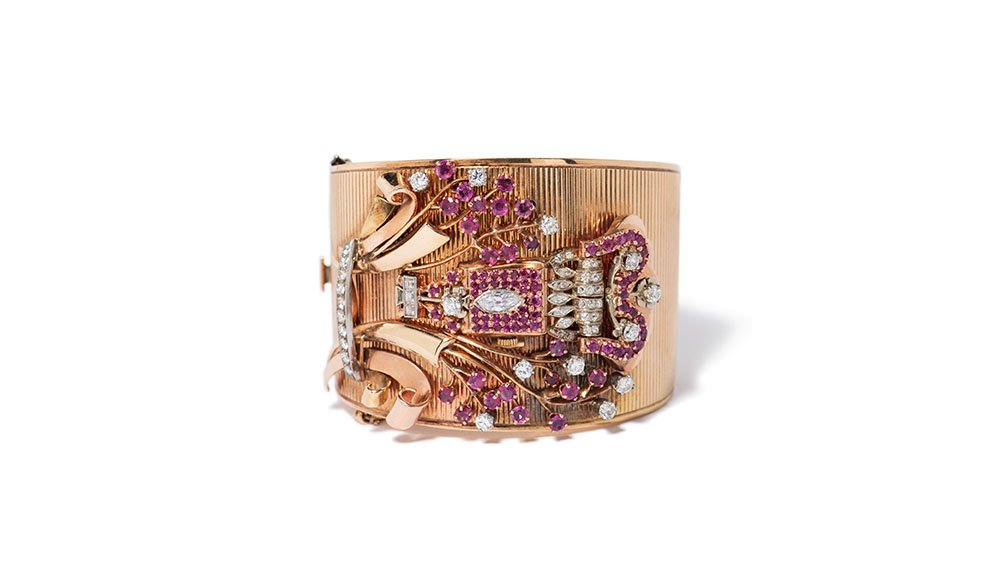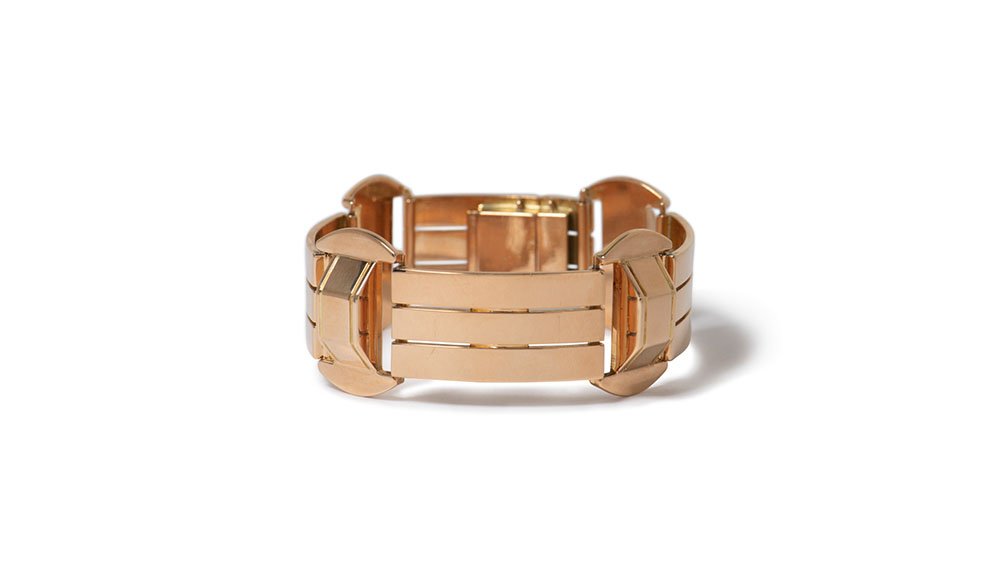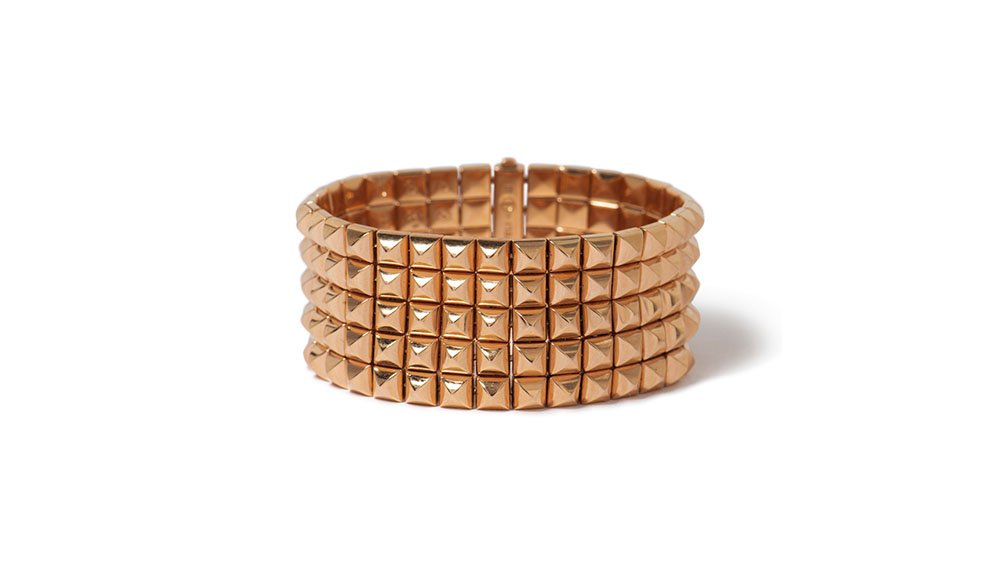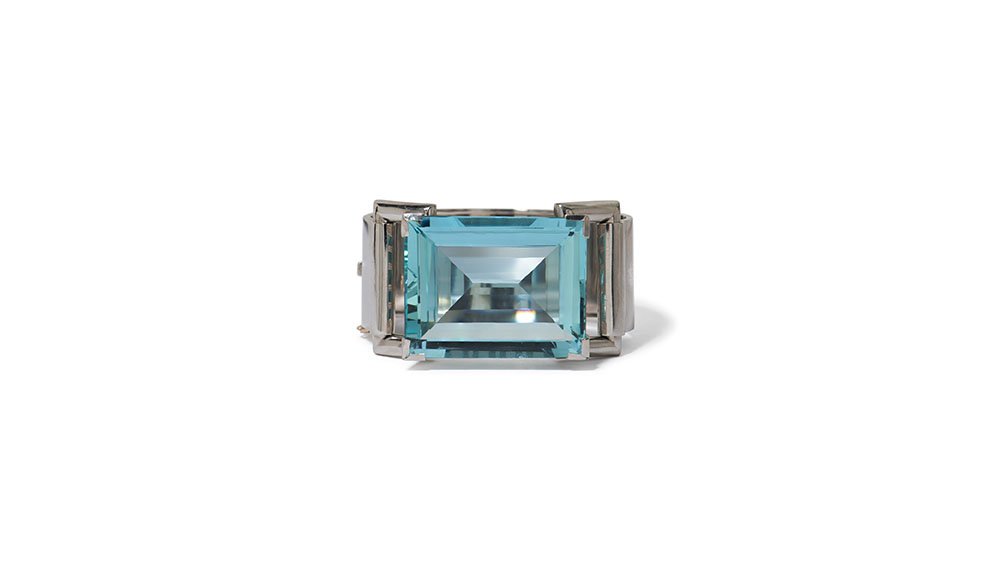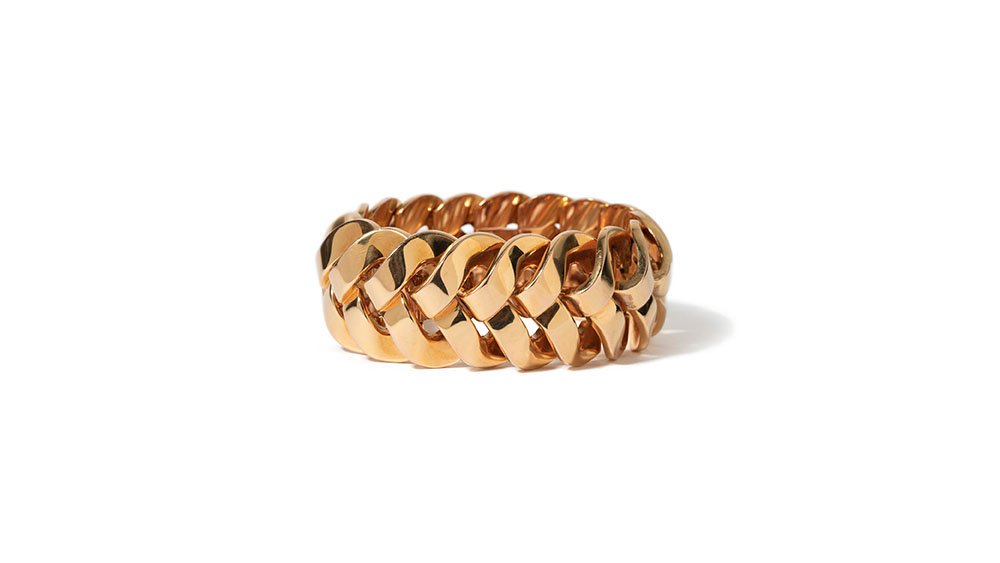Cracking the Code: Your Ultimate Estate Jewelry Identifier
In the realm of fine jewelry, there's an allure to pieces that transcend time, carrying with them stories of eras long past. Whether you're looking to unearth the hidden value in your heirloom jewelry or simply appreciate the craftsmanship of yesteryears, Windsor Jewelers, Inc. stands as a trusted beacon of expertise and authenticity. Unlocking the secrets of antique and vintage jewelry when you’re first starting out can often be a daunting task. You can lean on our team’s expertise to guide you through the ins and outs of this fine jewelry category. With over 35 years of experience, Windsor is your compass to navigate the intricate landscape of estate jewelry.
Discover Lasting Value
Antique and vintage jewelry possesses a unique charm that defies trends and echoes the elegance of history. We understand the enduring appeal of these pieces and emphasize the importance of authenticity when identifying their true value.
Let's explore the factors that influence your vintage and antique's hidden worth and discover the best way to sell your inherited jewelry treasures and get the most promising offers.
Understanding Antique & Vintage Jewelry
Before delving into the finer details of antique and vintage jewelry, it's essential to grasp its significance. In order to be classified as vintage, a piece of jewelry must have been made between 30–99 years ago. Antique jewelry refers to pieces crafted more than 100 years ago. The term “estate jewelry” is often used to refer to these period pieces due to their pre-owned nature. While all antique and vintage jewelry could be considered estate jewelry, not all estate jewelry has to be antique or vintage. Contemporary jewelry can also be pre-owned and therefore considered estate!
Each antique and vintage period carries distinct design elements that mirror the prevailing artistic and cultural influences. From the opulence of the Victorian era to the sleek lines of Art Deco, these historical touchstones shape the allure of antique and vintage jewelry.
Tips for Identifying Antique and Vintage Jewelry
Unmasking the secrets of antique and vintage jewelry demands a discerning eye and a keen knowledge of craftsmanship. Hallmarks, maker's marks, and signatures provide vital clues to the origin and authenticity of a piece. The materials employed, whether it's the choice of metals or the gemstones that adorn them, offer insights into their age and origin. Techniques such as filigree work, enamel detailing, and intricate patterns hold the key to dating these timeless treasures.
Hallmarks
Hallmarks are a type of “stamp” imprinted on a piece of jewelry. These stamps help date the jewelry and the maker. Among the intricate details of antique and vintage jewelry lie the marks that authenticate their provenance and tell the story of their origin. Deciphering these marks requires an understanding of historical codes and practices. Windsor Jewelers serves as your knowledgeable guide, helping you decode these enigmatic imprints.
Purity Marks: The most common markings found on jewelry. These are used to indicate the metal composition (gold, platinum, or silver) found in the piece of jewelry.
Maker’s Marks: used to identify the maker of the jewelry piece, often a brand name.
Town & Region Marks: used to identify the town or region of the metalsmith who crafted the piece. Town marks are often found on English and Italian jewelry, while region marks are found on French jewelry.
Examining Design Elements
Estate jewelry tells a visual story through its design elements, each era leaving its distinct mark. The symmetrical and geometric shapes of Art Deco, the romanticism of Victorian filigree, or the bold statements of Retro designs — each style encapsulates a specific moment in time. Windsor Jewelers curates an array of pieces that exemplify these unique design traits, preserving the heritage and spirit of each era.
Victorian (1837–1901)
Step into a bygone era of enchantment and elegance — the Victorian era, spanning the illustrious reign of Queen Victoria from 1837 to 1901. Victorian jewelry, a testament to the romantic sensibilities of its time, is a rich tapestry woven with colorful gemstones and intricate symbolism.
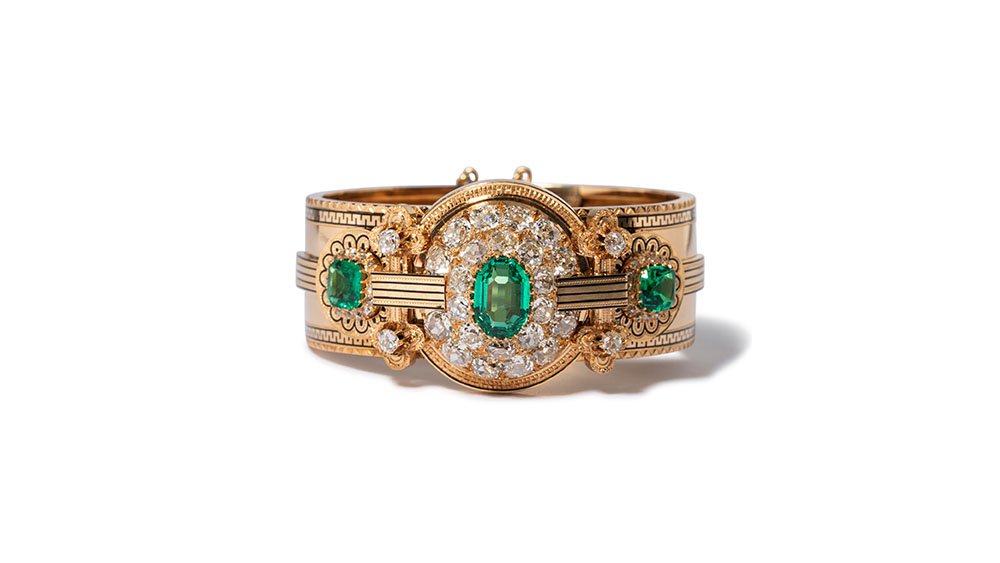
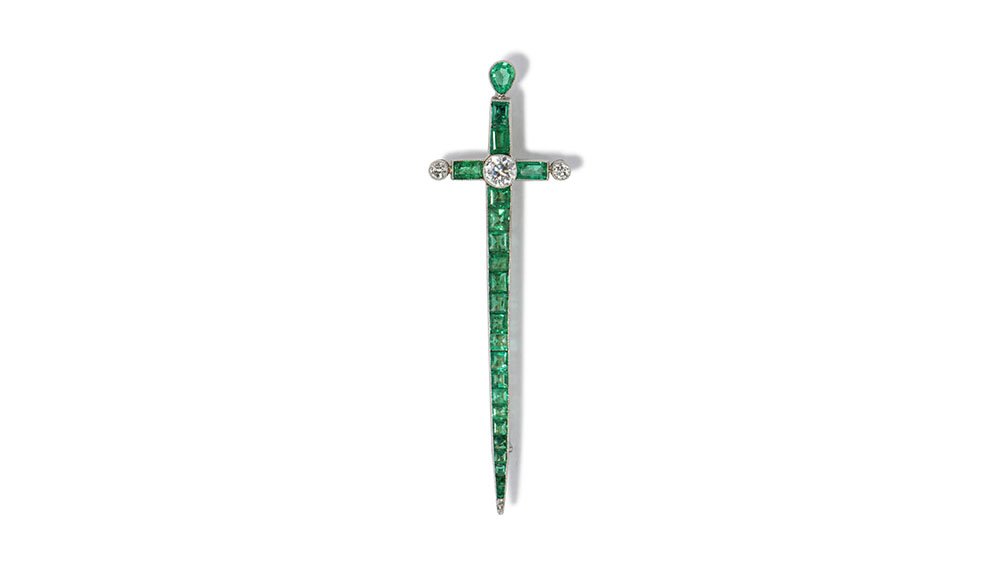
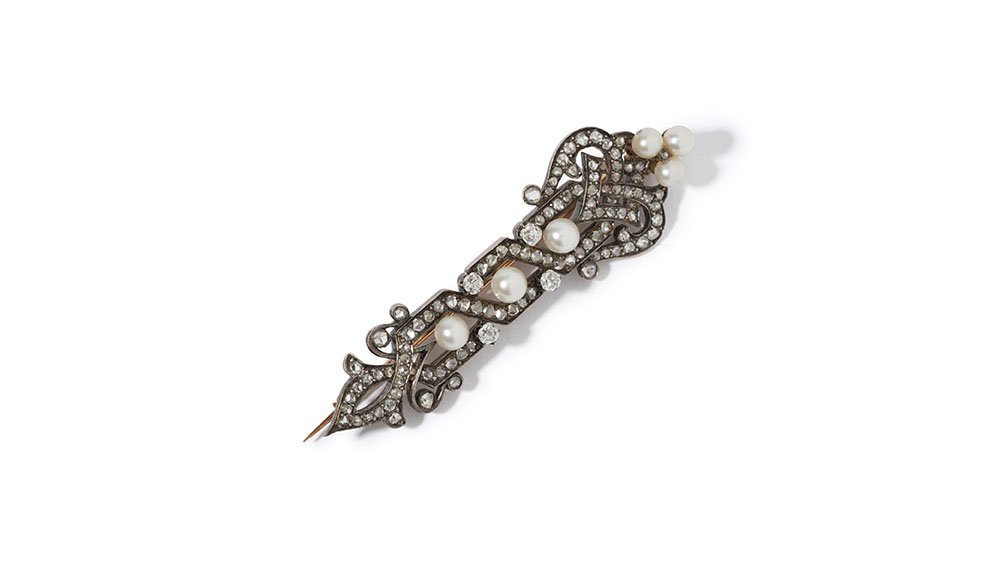
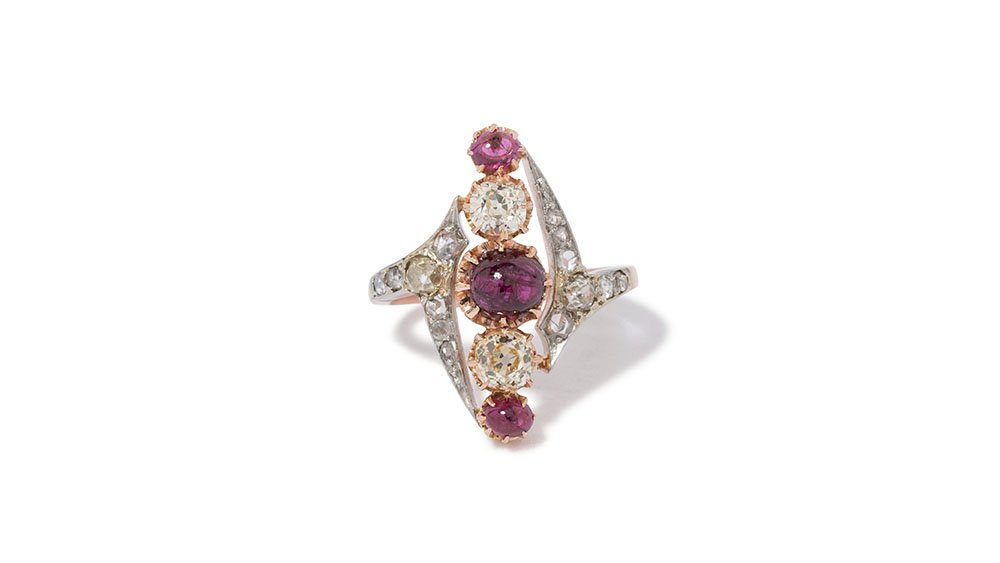
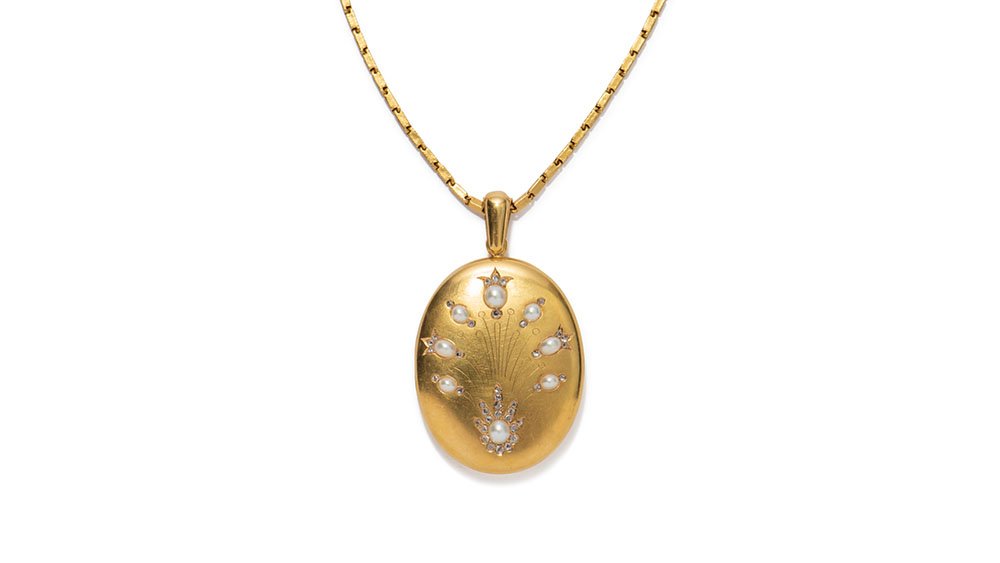
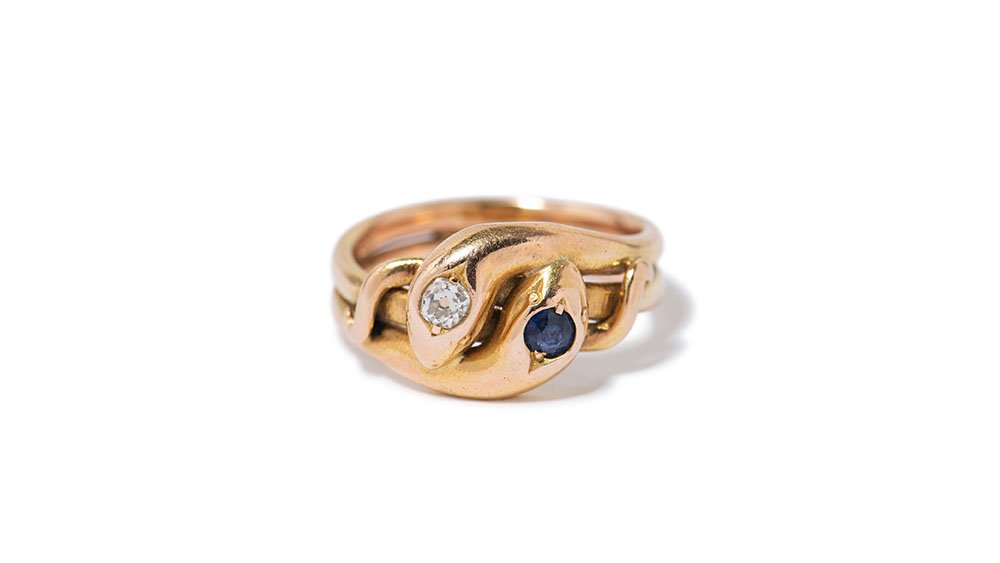
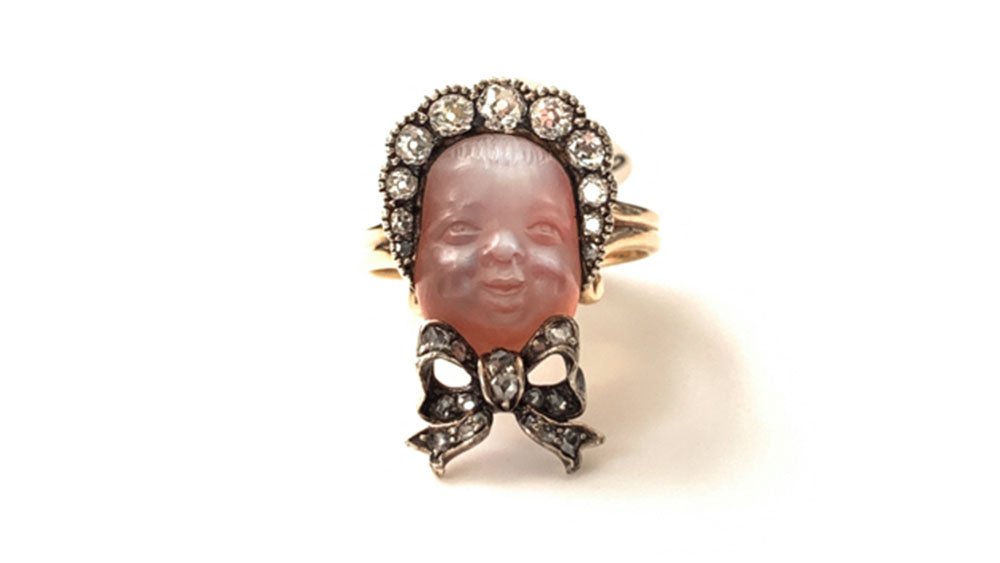
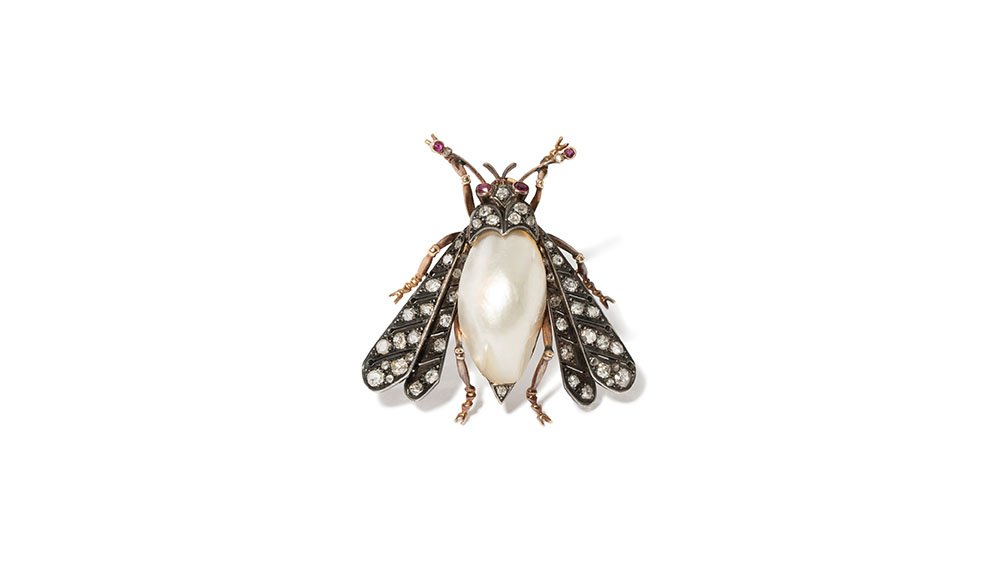

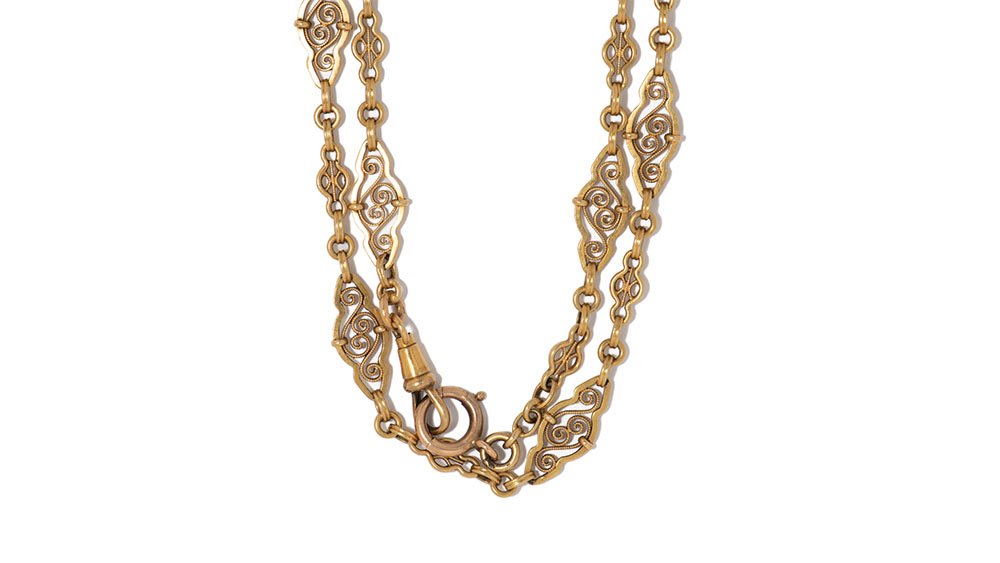
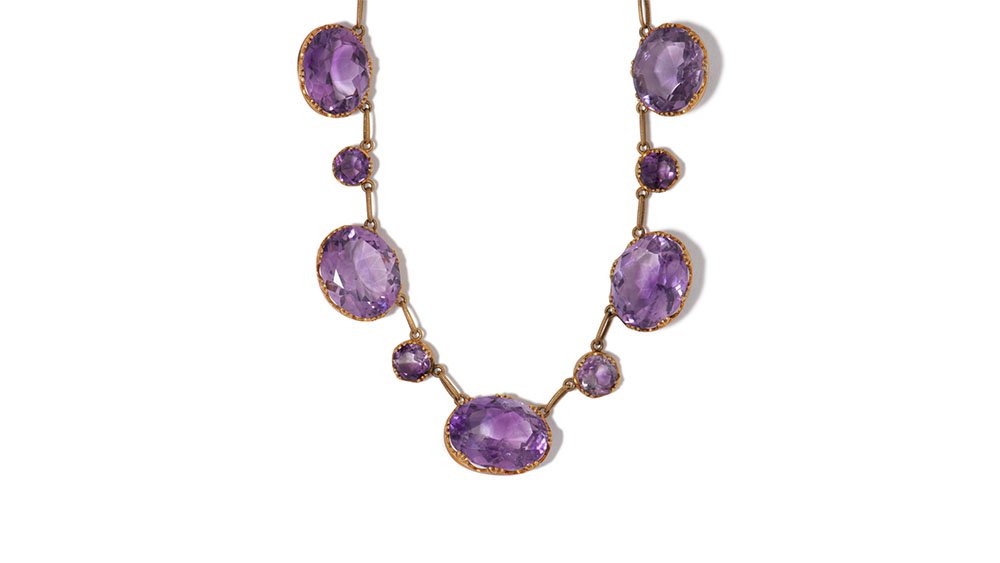
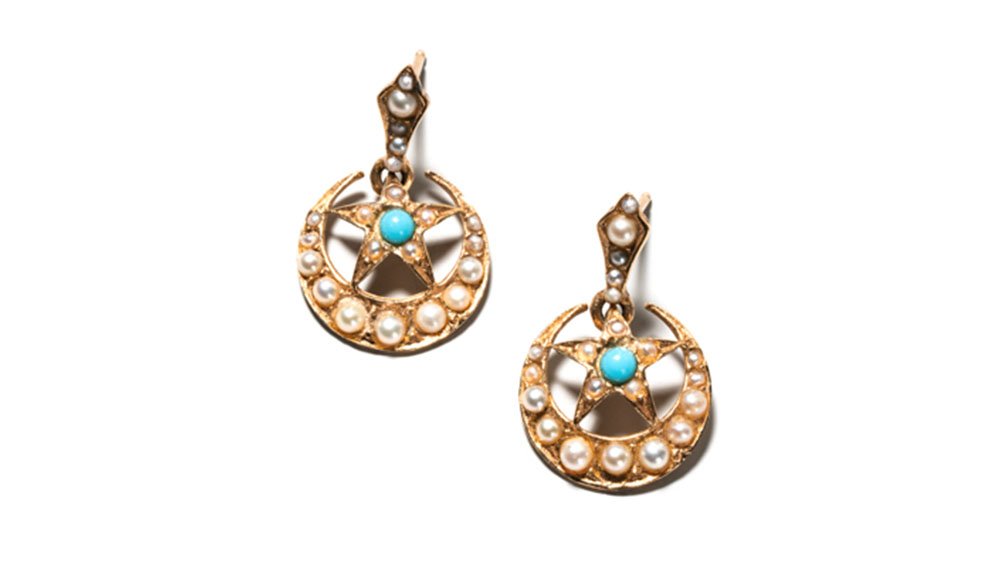
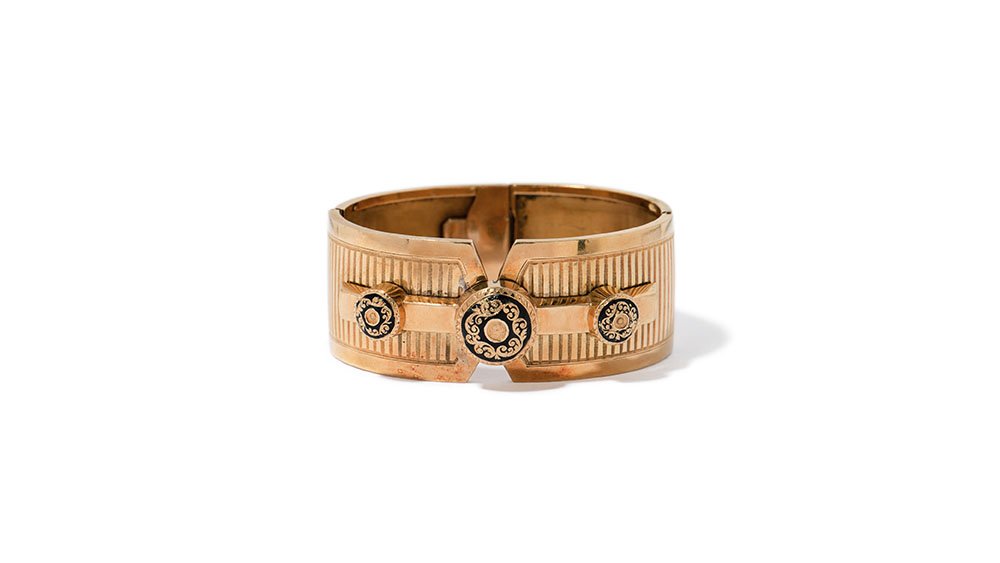
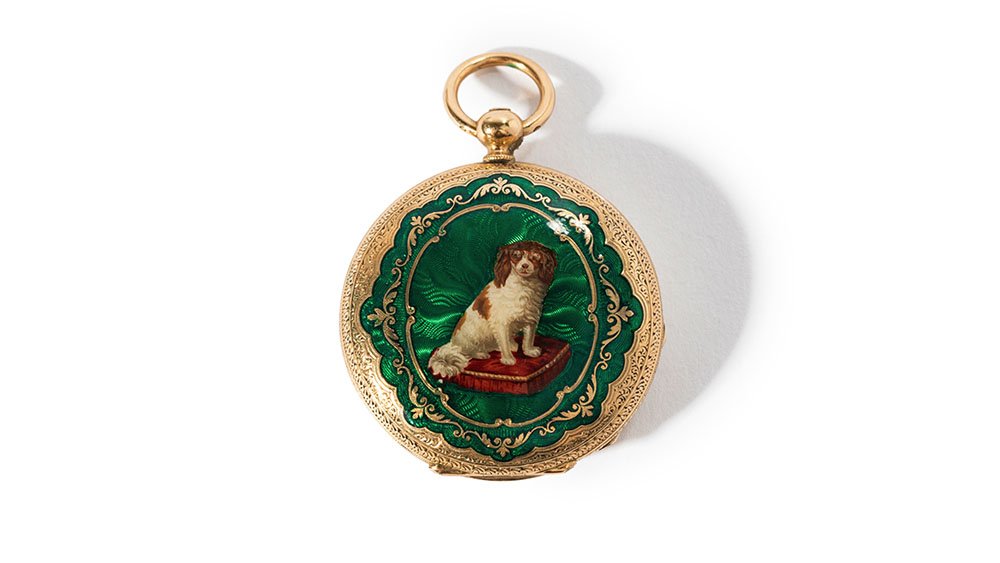
Favored materials: A vibrant palette of gemstones, including emeralds, rubies, and diamonds, often embraced in their raw, roughly cut forms. Jewelers often crafted pieces from 18k gold, although the scarcity of gold before the California Gold Rush led to the use of lower karats and gold plating.
Style differentiators: Hearts, and emotive shapes; flora, leaves, snakes, ivy, and other natural elements carved into cameos, medallions, and brooches; sentimental jewelry.
Art Nouveau (1890–1914)
Art Nouveau, in stark contrast to its Art Deco counterpart, invites you into a world of organic shapes and flowing curves. Here, jewelry takes on the delicate forms of leaves, petals, and enchanting motifs like fairies, insects, and flowers. The era found its muse in Japonisme, celebrating the elegant simplicity of nature. This creative jewelry movement revels in the decorative arts, rejecting the ornate style of the Victorian era.
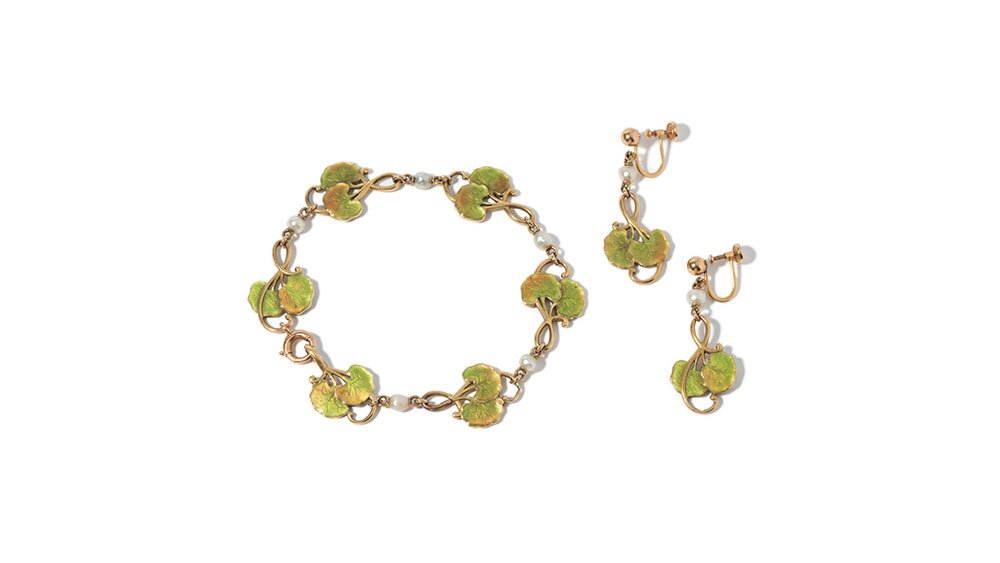
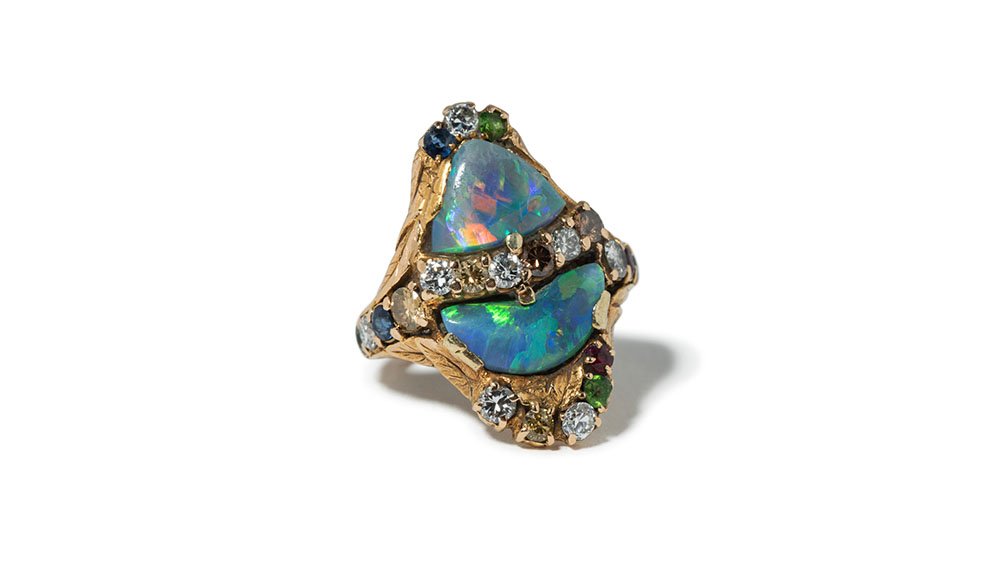
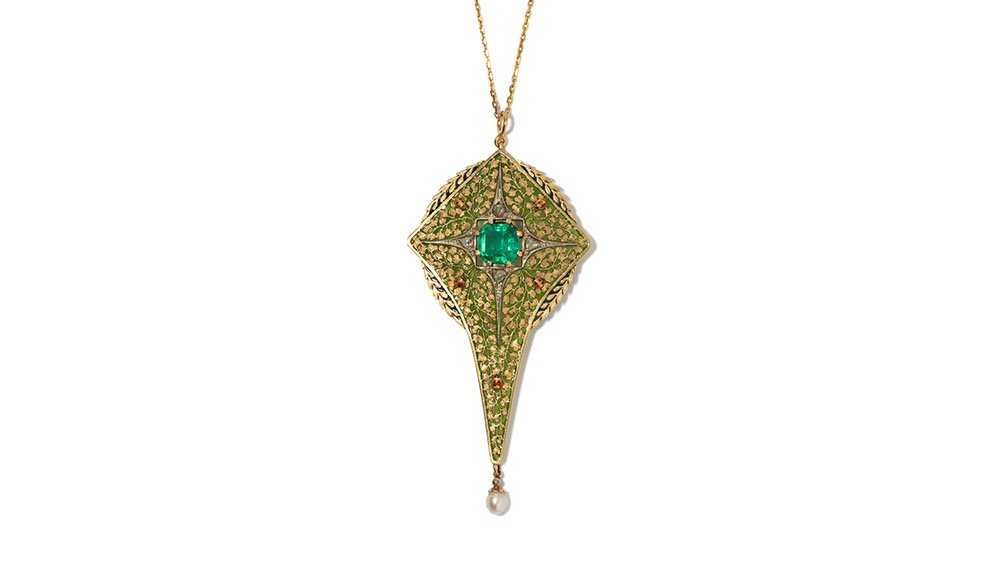
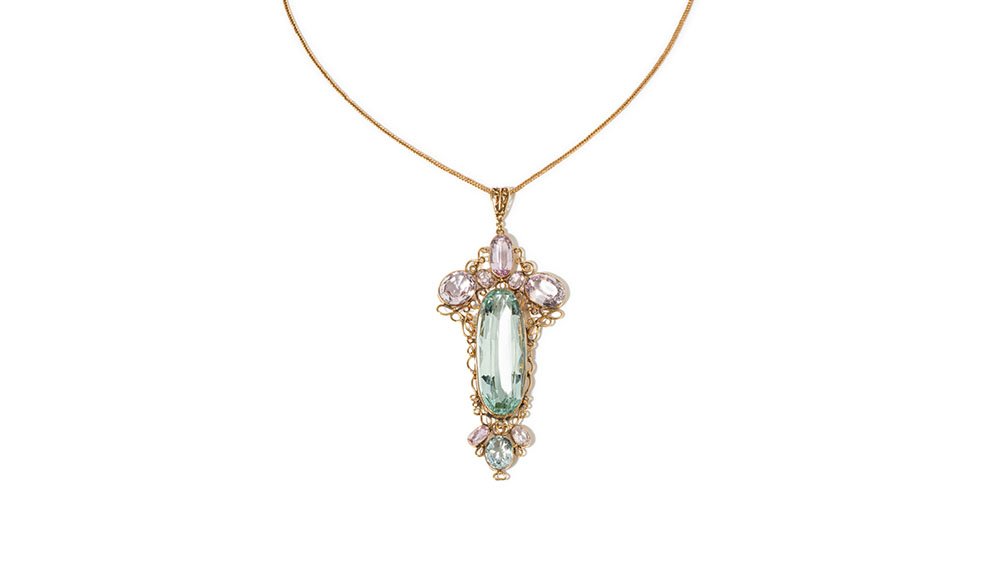
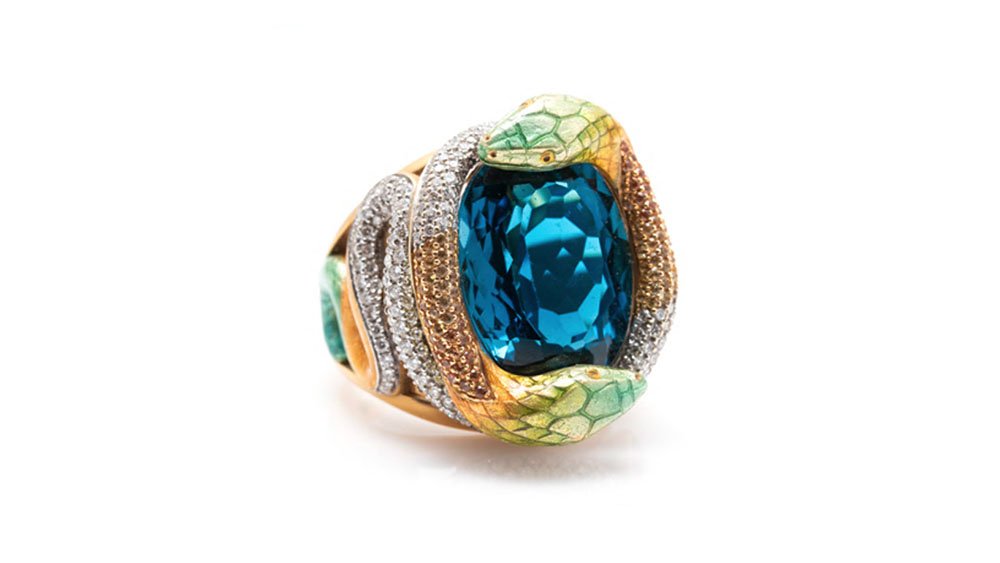
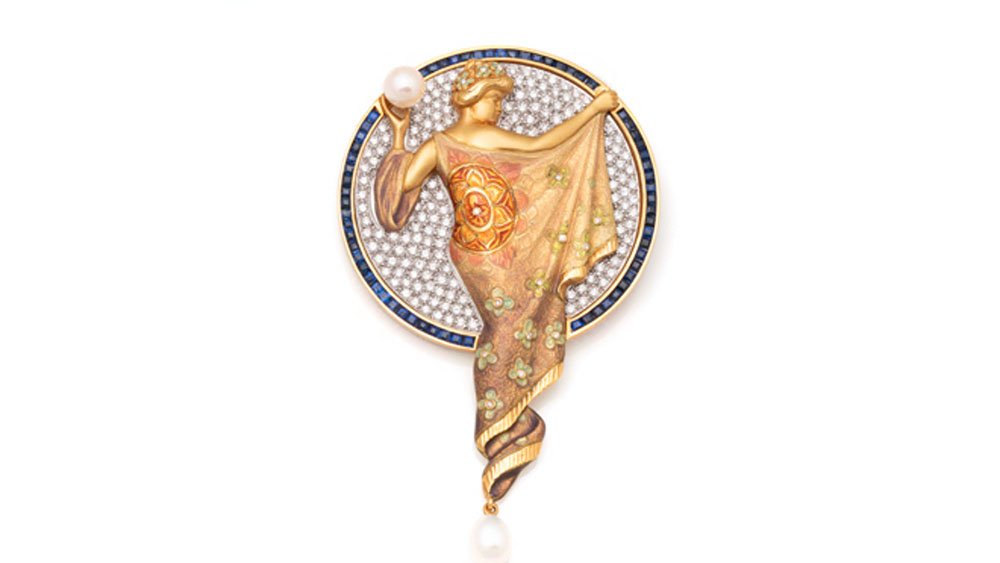
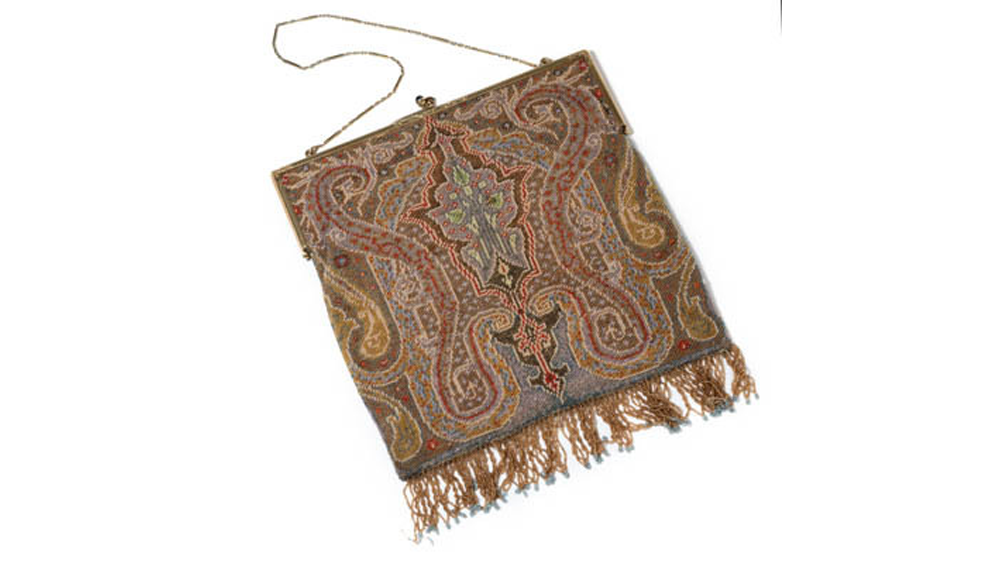
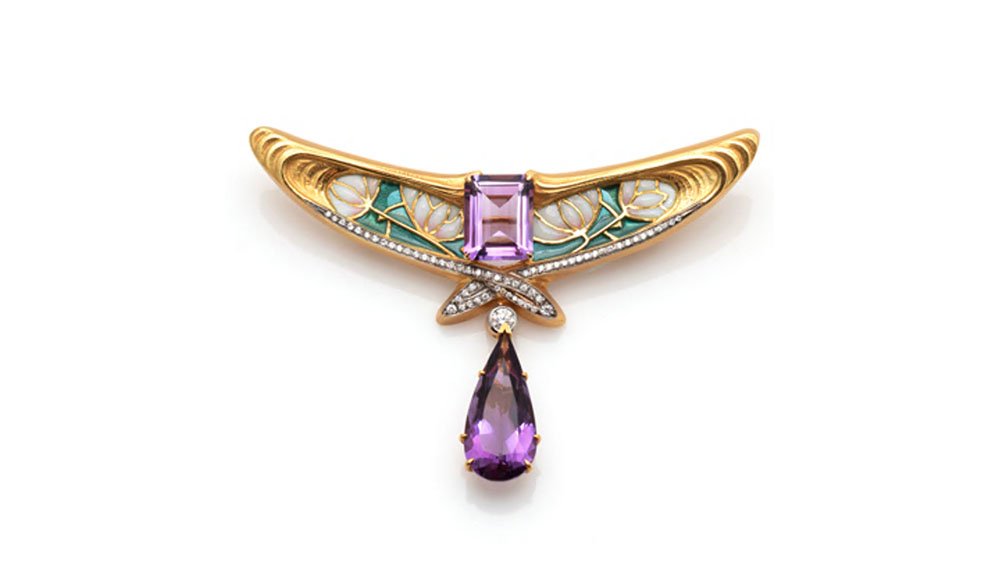
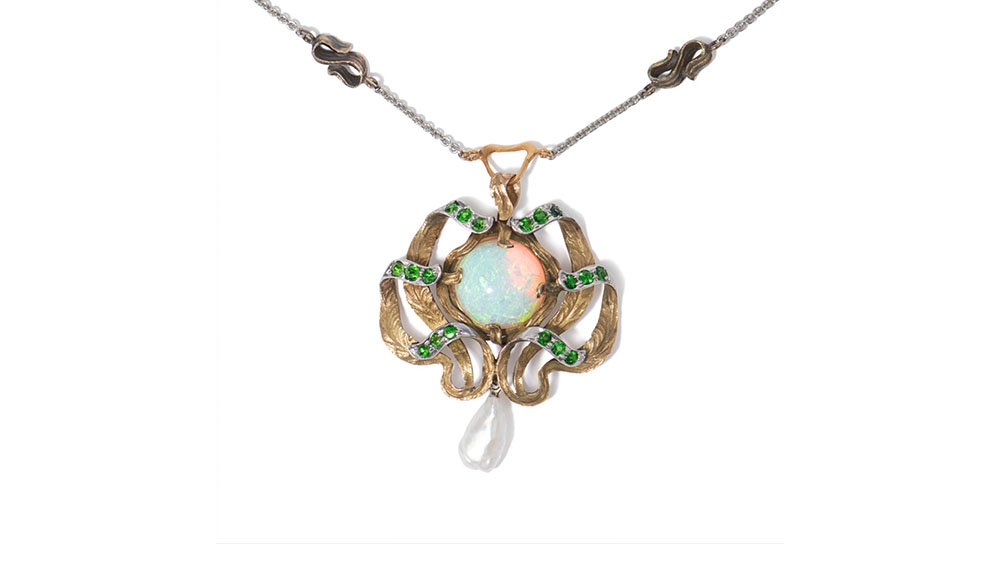
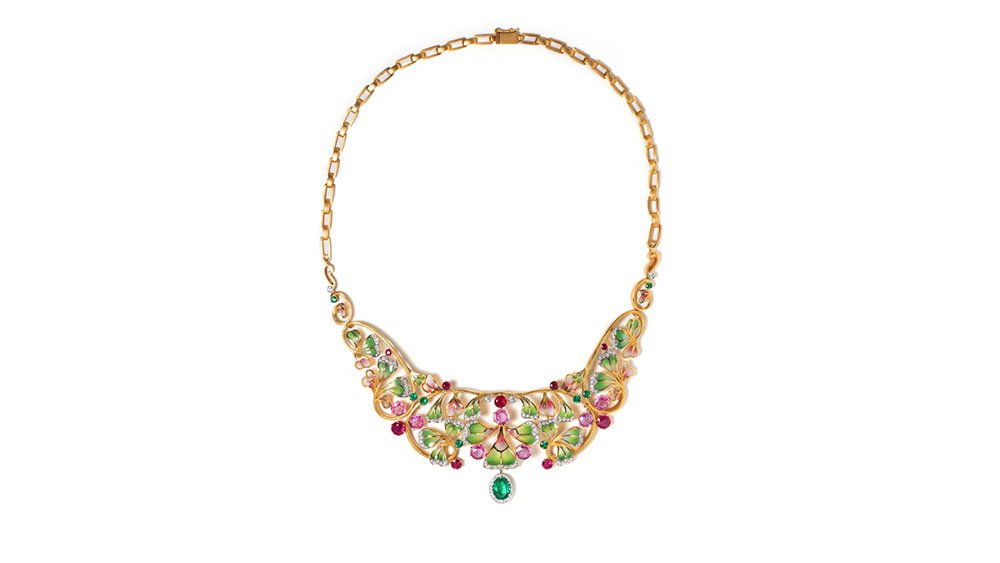

Favored materials: Gold, horn, jasper, amber, aquamarine, glass, enamel, opal, moonstone, ivory, baroque pearls in irregular shapes and shades,
Style differentiators: pastel colors achieved through enamel; Japonisme expressed through vibrant colors, organic motifs, and sinuous lines; elaborate handcrafted designs; the nude female form inspired by actresses and opera singers symbolized a deep connection to nature; mythological creatures like Medusa, sphinxes, sirens, and mermaids.
Edwardian (1901–1910)
An era of grace and fragility, where jewelry became a tapestry of delicate metalwork and ethereal designs. The Edwardian era, nestled within the early 1900s, unfolded during King Edward's rule in England, and it redefined jewelry with a touch of lacy, light metalwork.

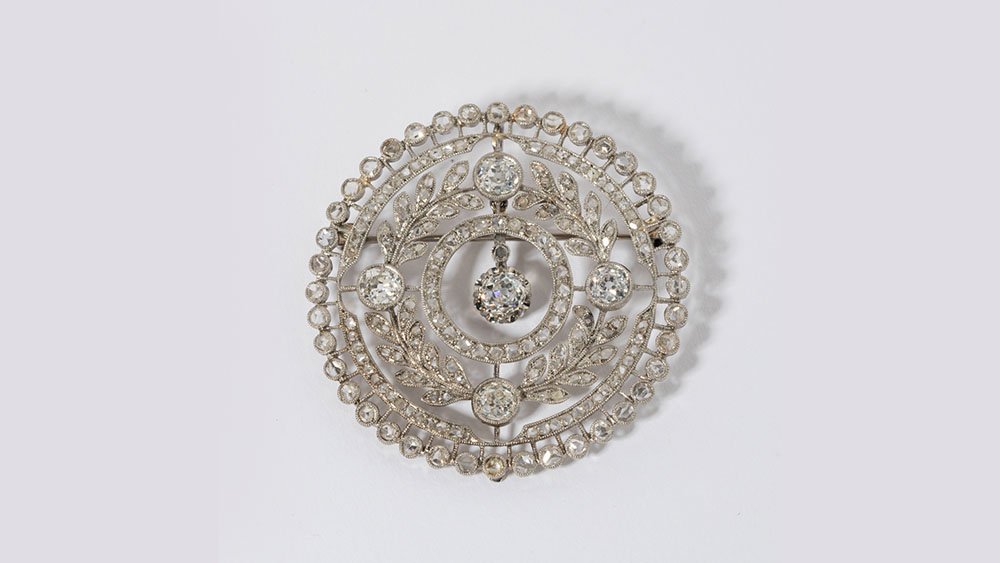
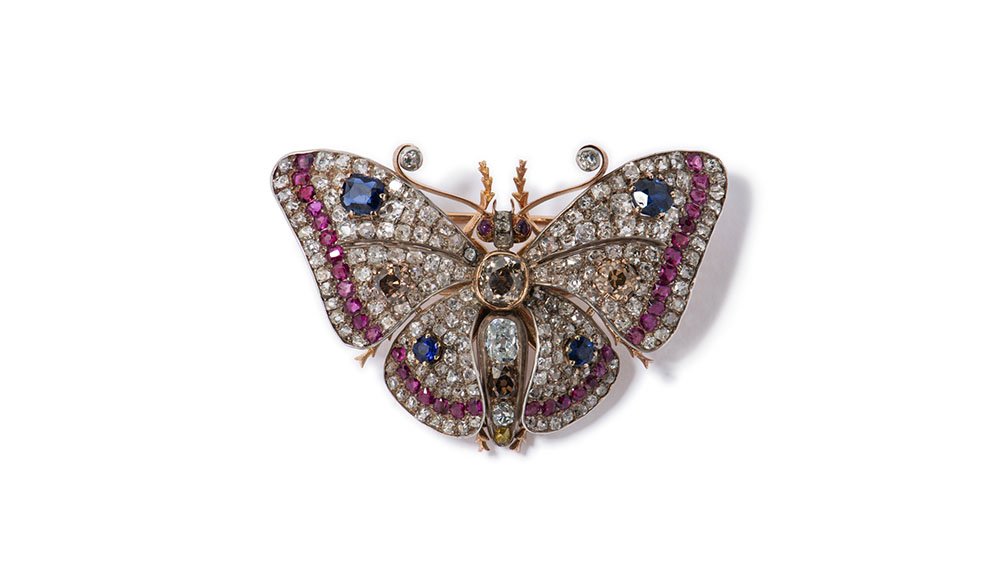
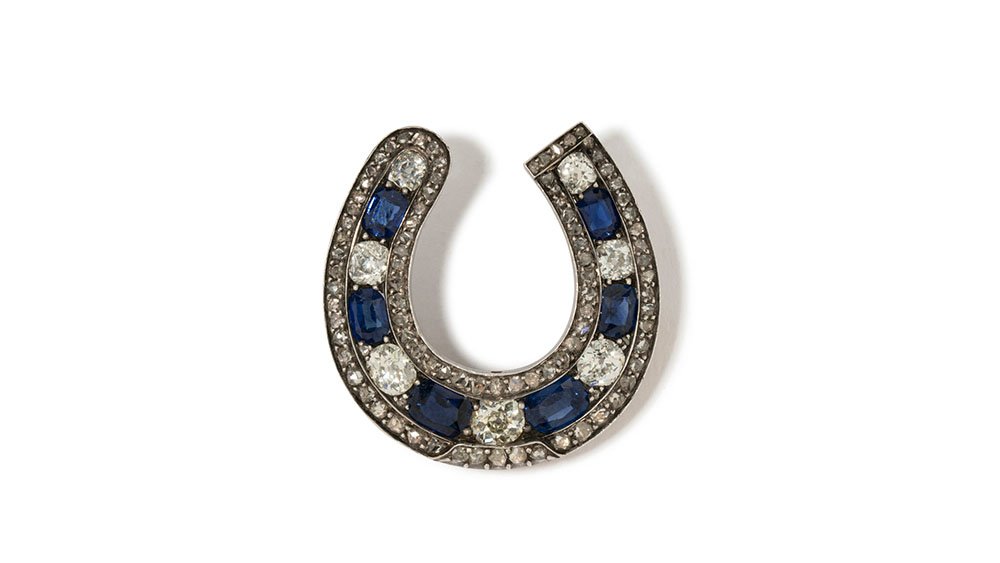
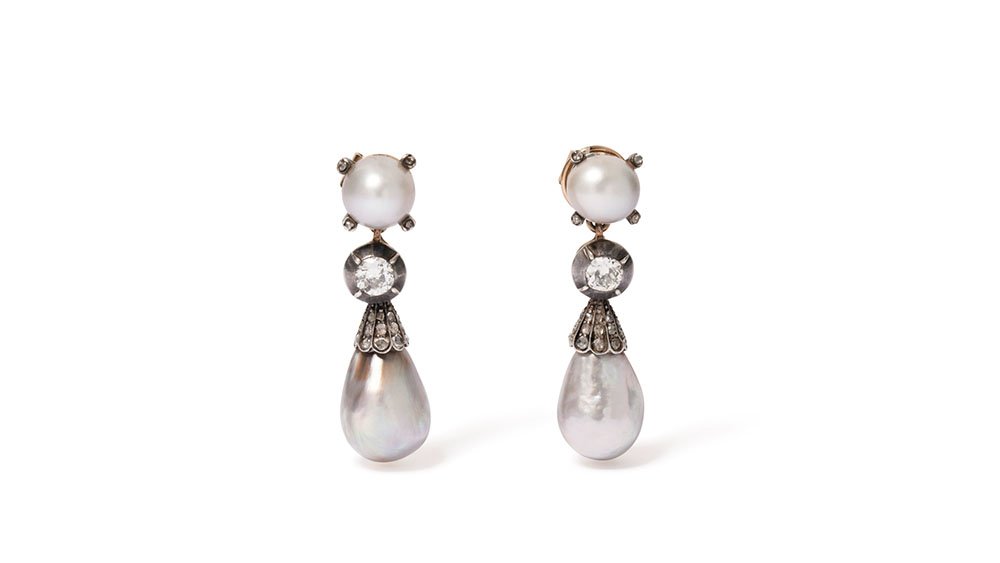
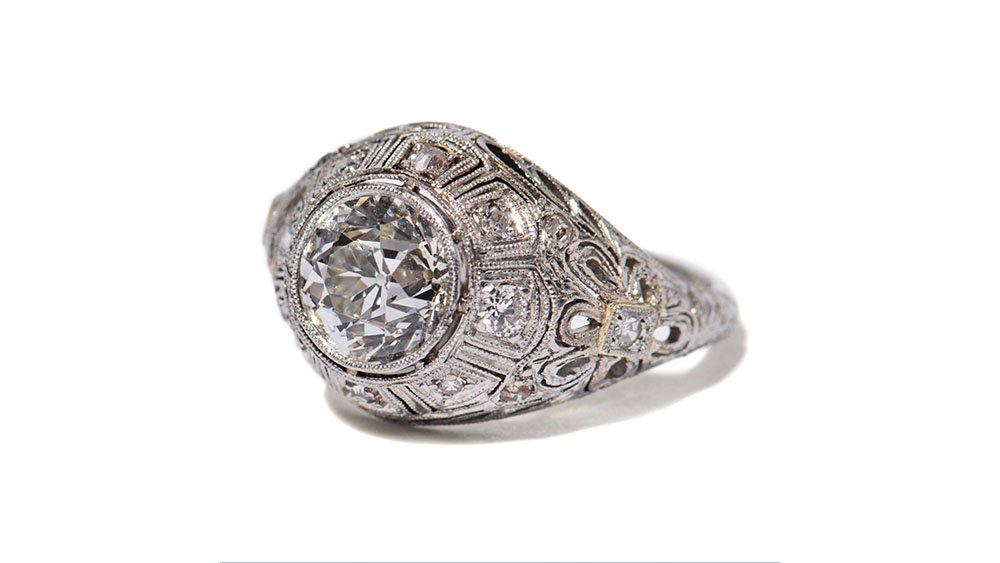
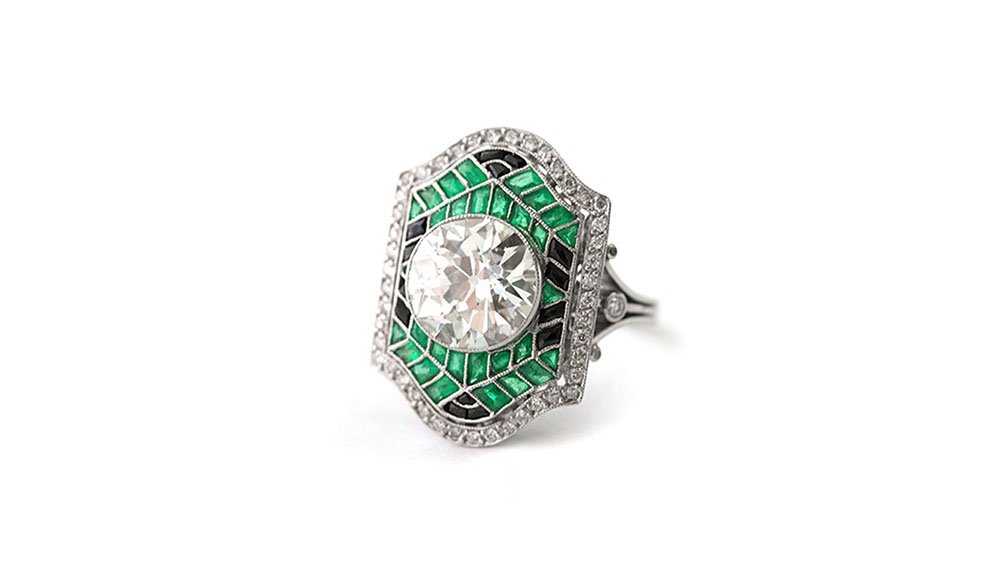
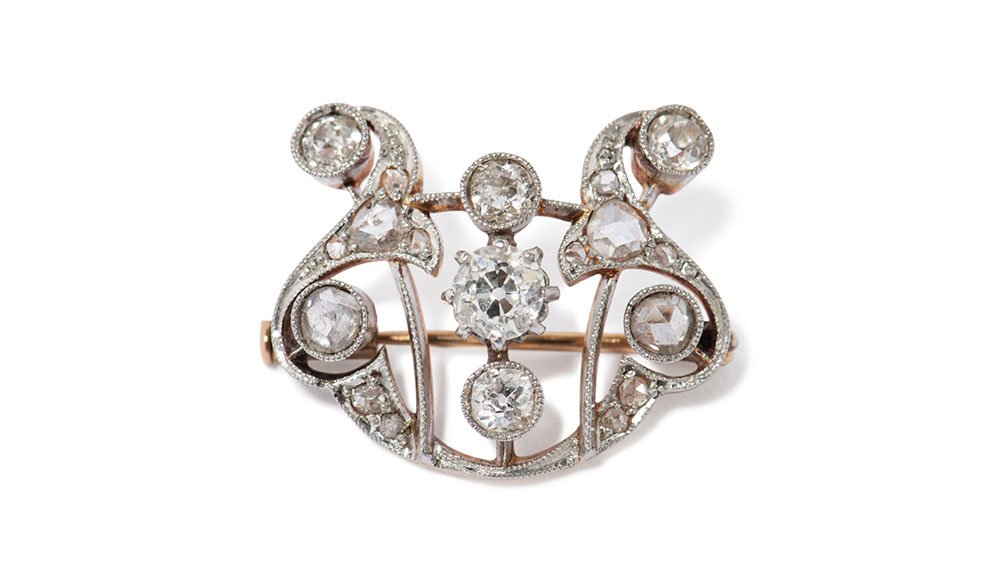
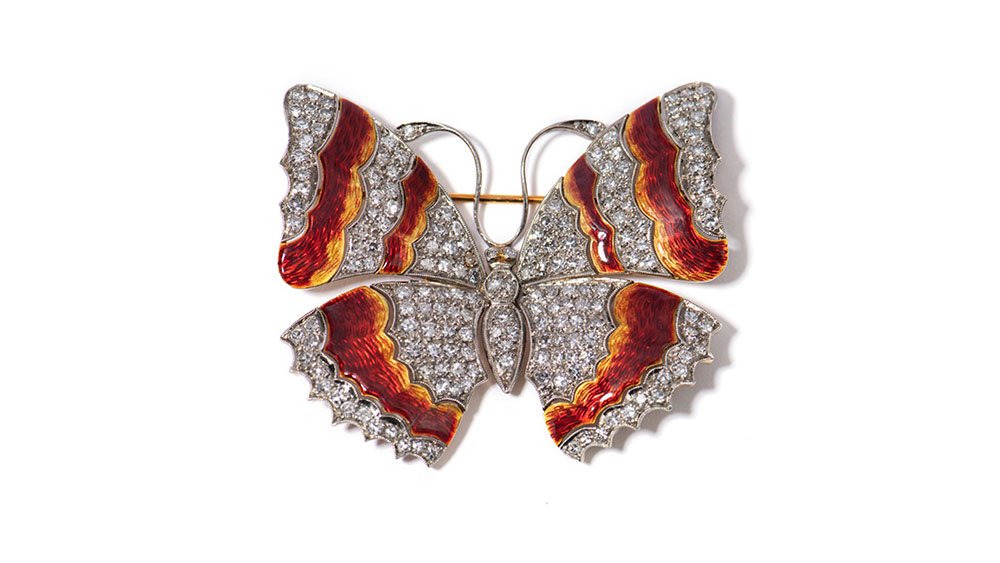
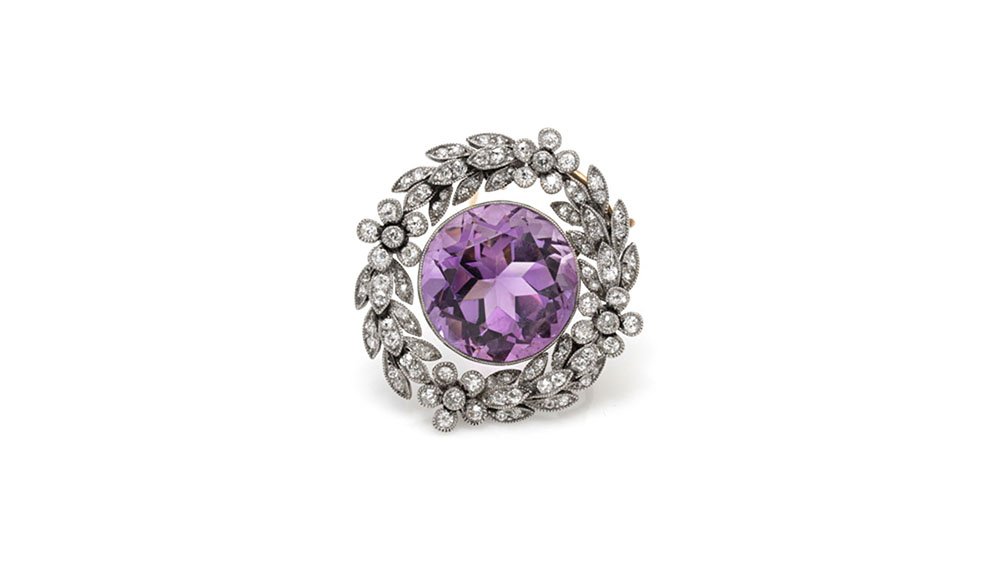
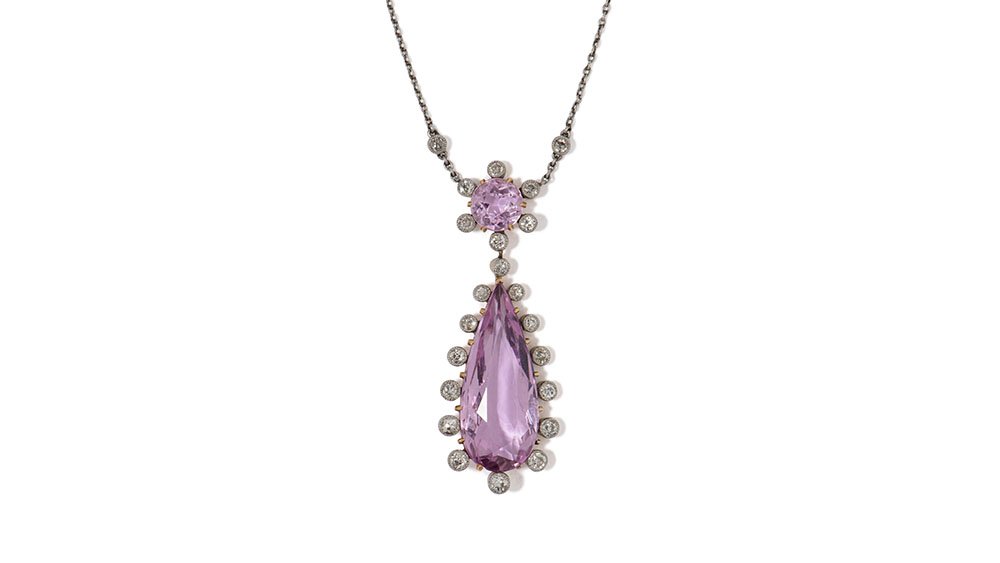
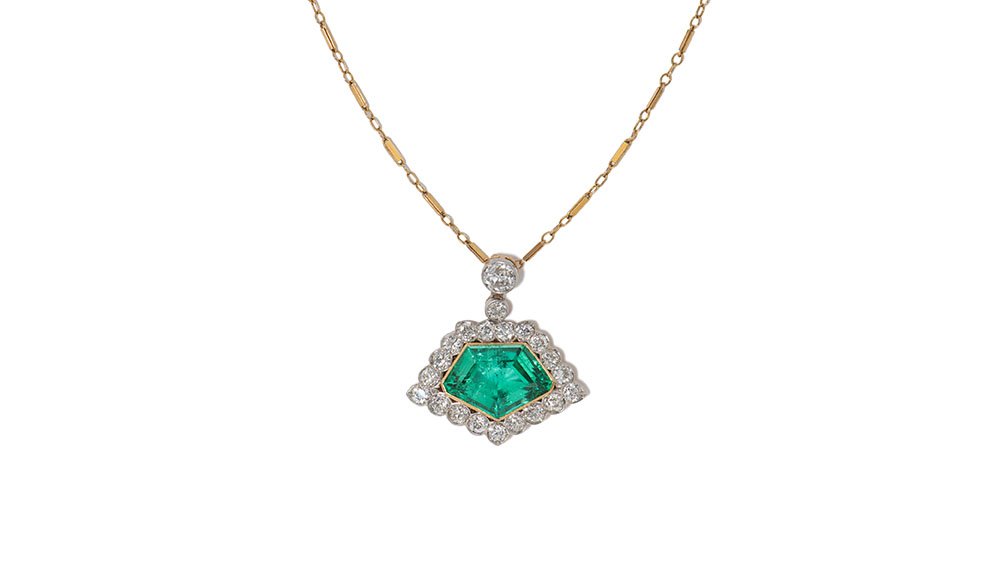
Favored materials: Enduring materials like platinum, pearls, and diamonds, rejecting machine-made pieces in favor of hand-crafted elegance.
Style differentiators: Traditional motifs such as bows, garlands, ribbons, and lace; airy, diamond-encrusted 'lace' jewelry; 'invisible diamond settings,’ and intricate filigree settings; millegrain; regal diamond and pearl filigree tiaras; feather aigrettes; colliers de chien, or dog collars made from ribbons with brooches or gemstones; long necklaces and pearl chains.
Belle Époque (1871–1914)
An era where opulence meets grace in a harmonious dance of metalwork and gemstones. Also known as the "Beautiful Era," Belle Époque spans three distinct jewelry design periods — Art Nouveau, the Arts and Crafts movement, and the Edwardian era. It was a time of burgeoning wealth and flourishing arts, marked by the rise of cinema and the ascendancy of movie stars as trendsetters. Hollywood and America emerged as the epicenter of influence, eclipsing even European royalty.
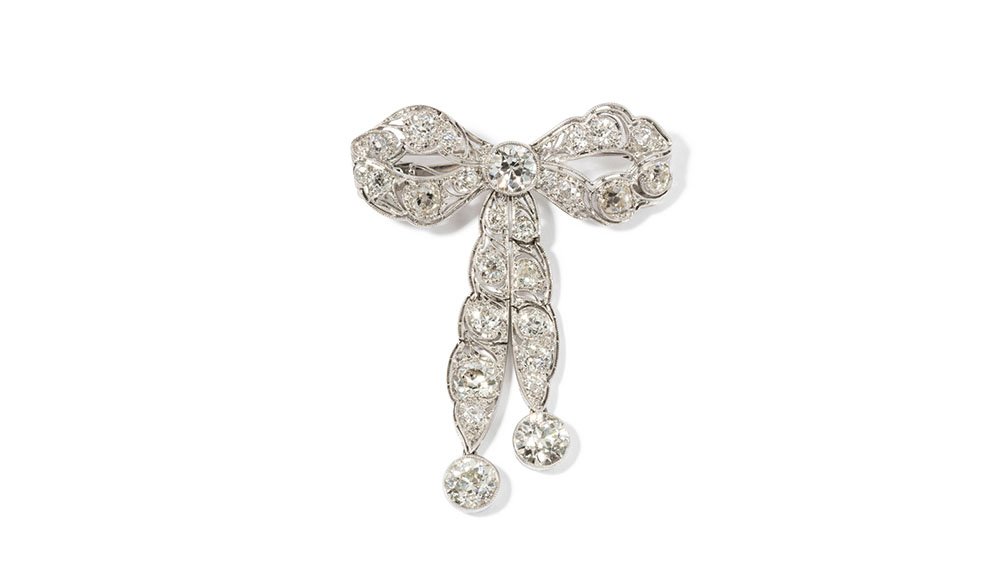


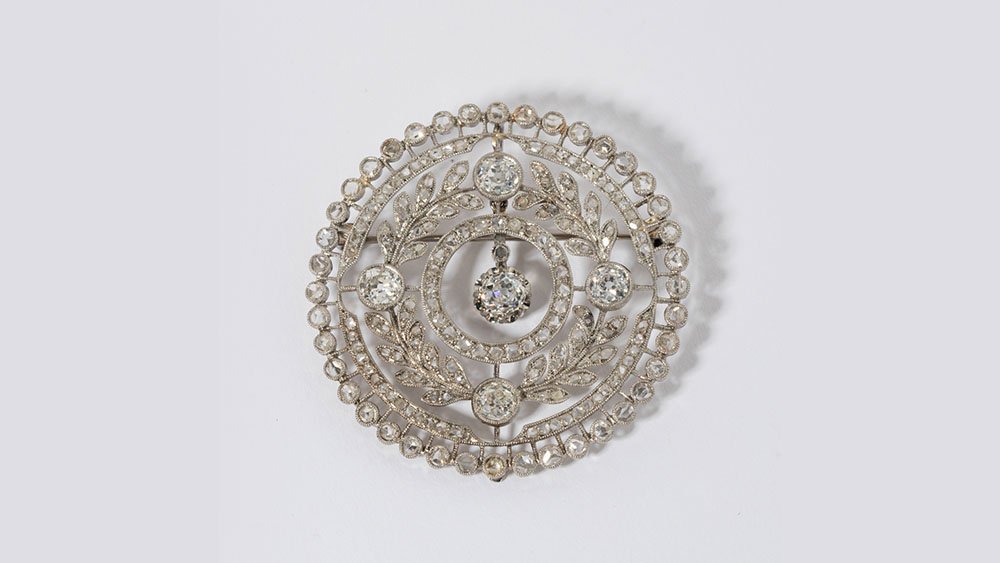
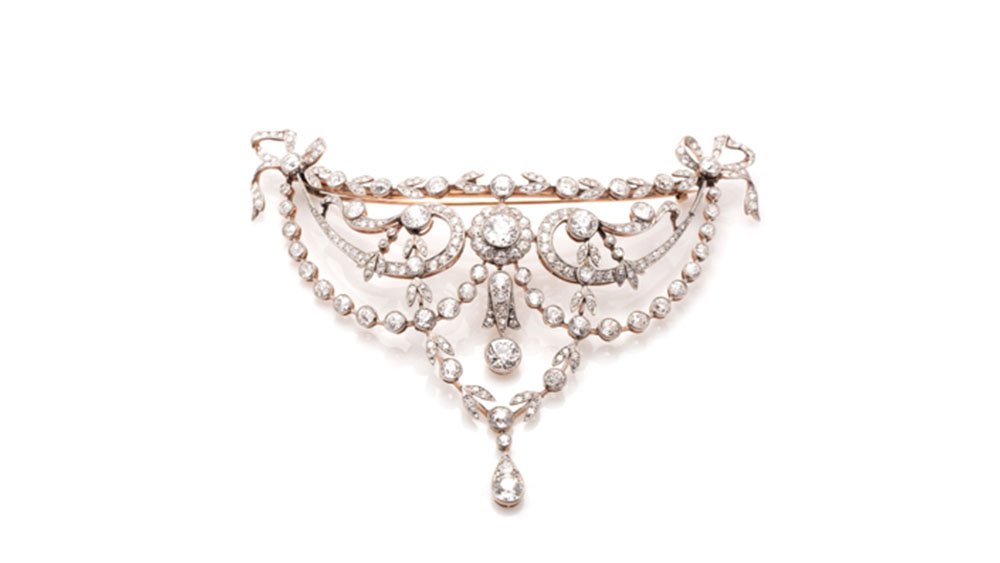
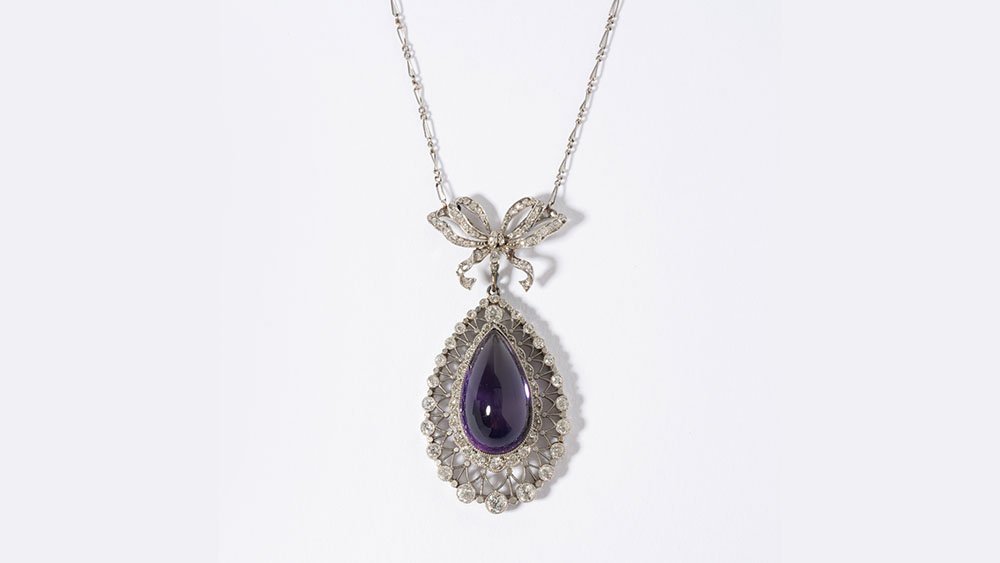
Favored materials: Cultured, freshwater, and saltwater pearls, platinum, diamonds, opals, moonstones, ivory, enamel, glass.
Style differentiators: Garlands and swags of foliate motifs; delicate lacework and charming bows; elegance — graceful, flowing lines and a sense of lightness; intricate craftsmanship combined with machine-made; feminine motifs; neoclassical and rococo influences; ethereal and detailed — jewelry that appeared to “float”; organic shapes like leaves, petals, and natural elements.
Art Deco (1915–1935)
A time of unparalleled glamor, luxury, rebellion, and style, the Art Deco era stands the test of time in its appeal. There are two inventions paramount to Art Deco jewelry design: the ability to work with platinum and the invention of home electricity. Because platinum is a much stronger metal than gold and silver, its strength allows for the filigree, sharp angles, and "lightness" of the metal for which Art Deco jewelry is known. The second invention was electricity, specifically the introduction of electricity into the home. While Victorian jewelry was designed to sparkle in candlelight — meaning chunkier gemstone facets and heavier metals — Art Deco jewelry was created to sparkle in modern electricity, prompting smaller gemstone facets and finer metalwork.

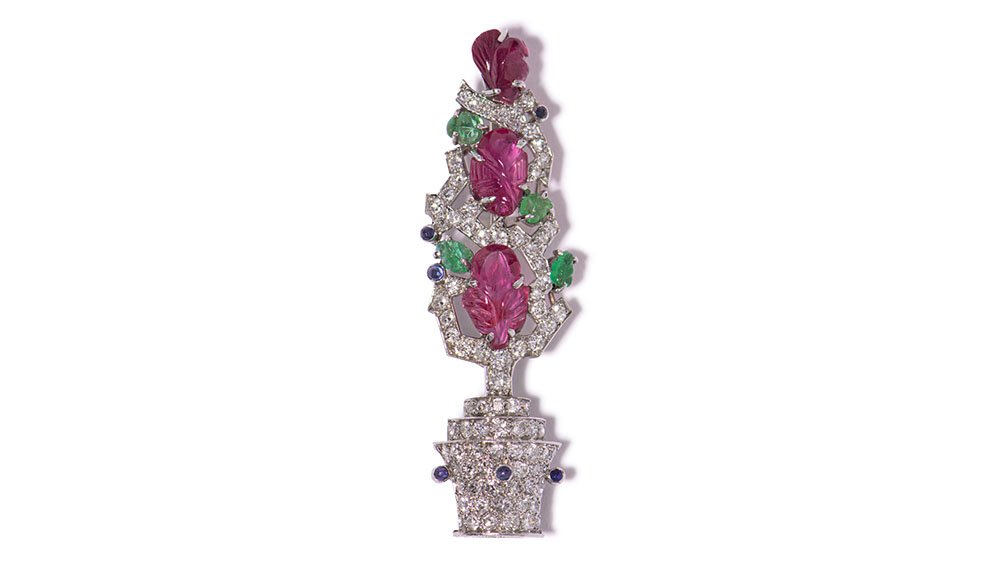
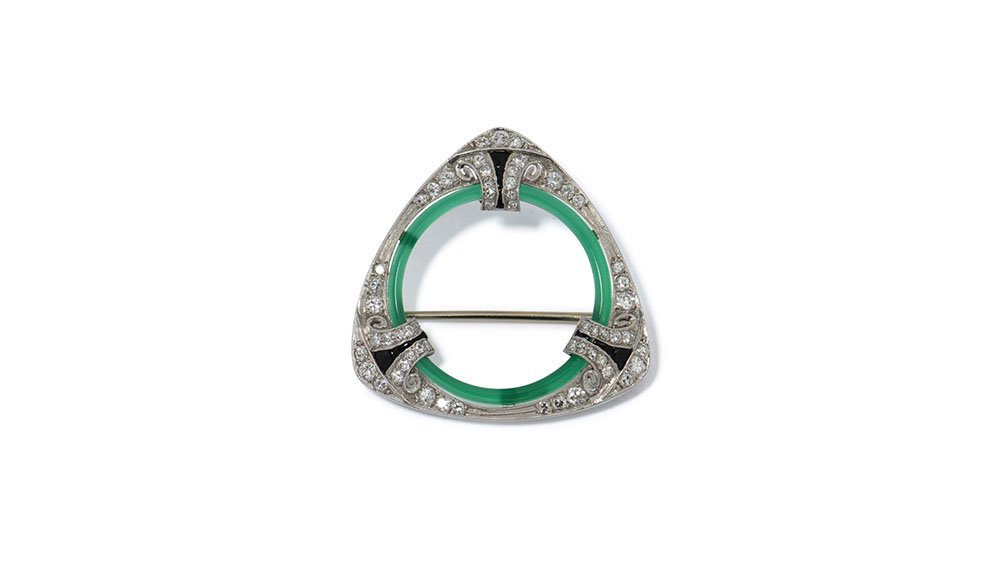



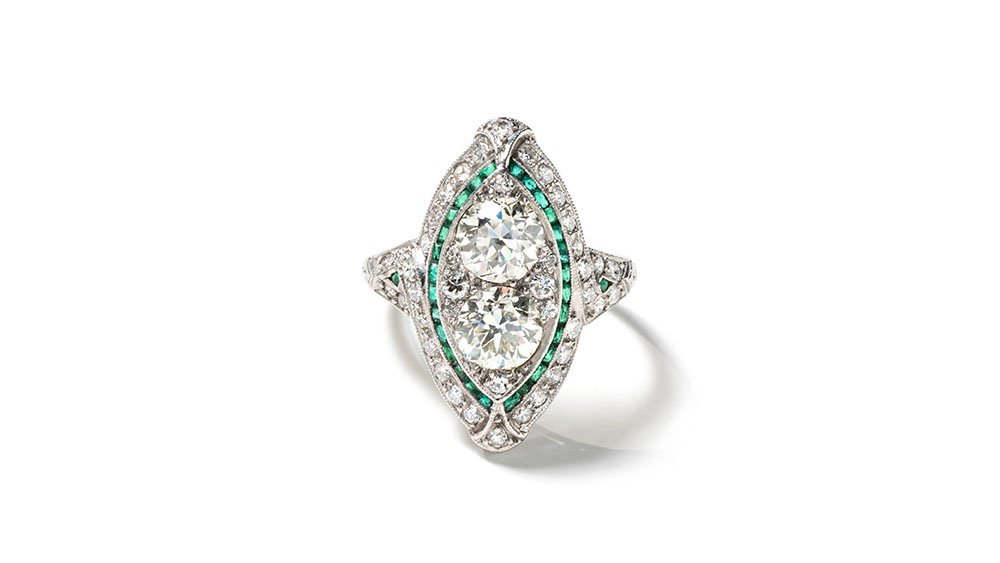
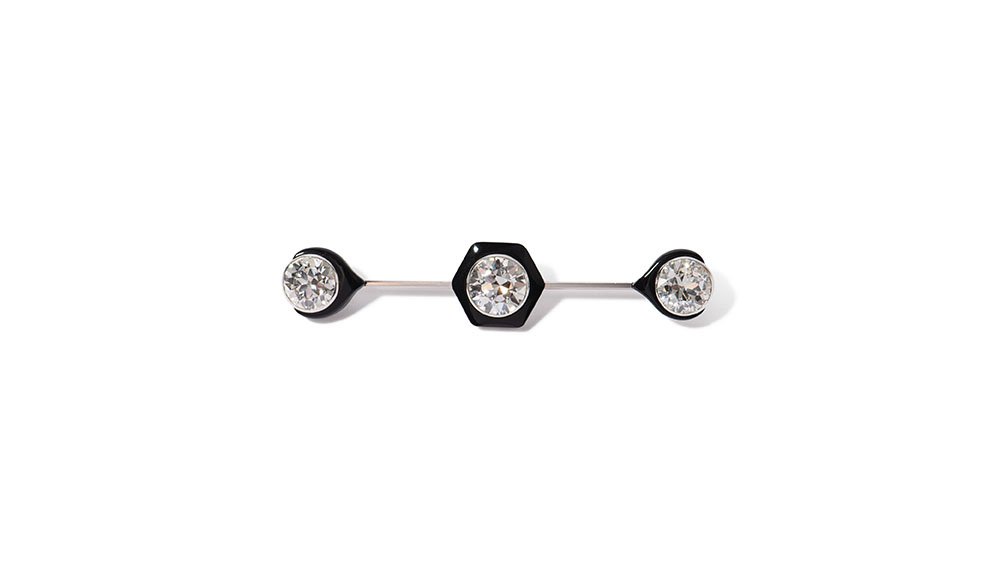
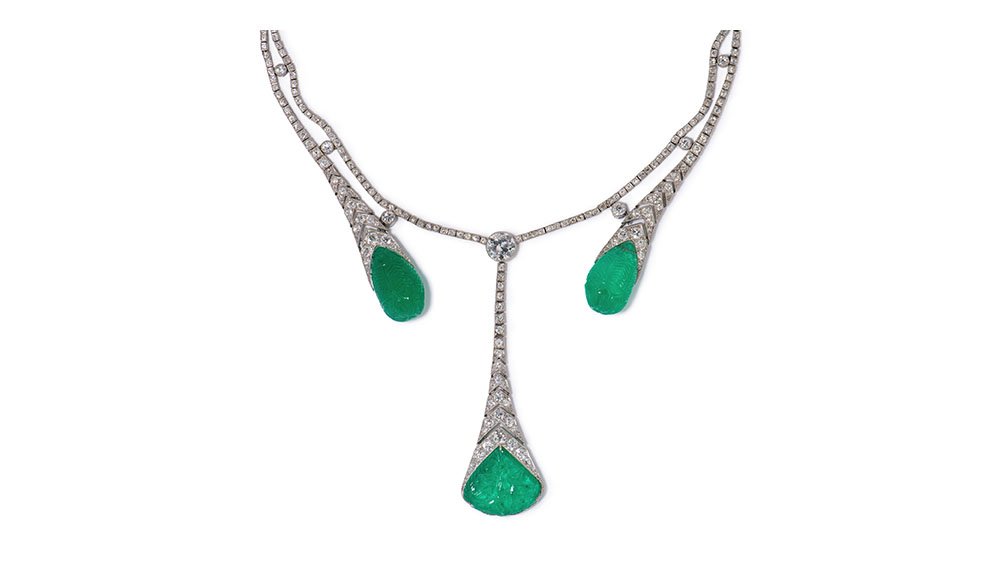
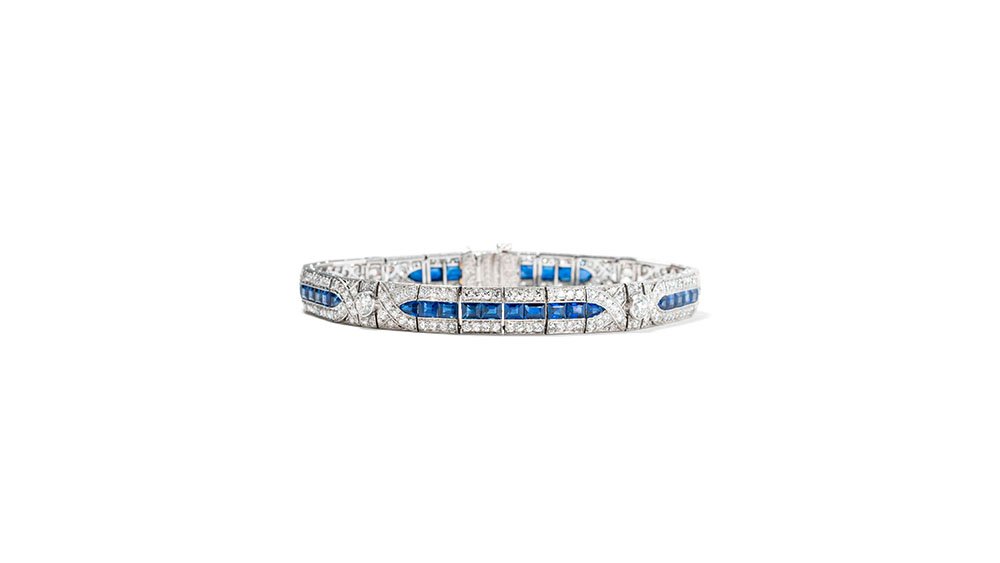
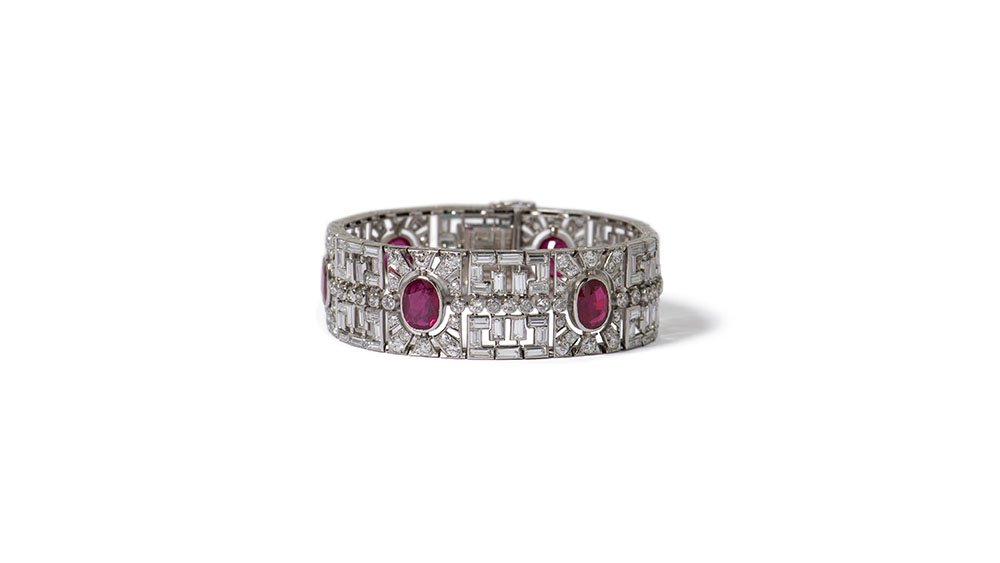
Favored materials: Sapphires, rubies, emeralds, onyx, platinum, pearls
Style differentiators: Stark, geometric shapes; filigree; bold and bright designs; symmetry; platinum. Yellow gold was not as prominent as platinum, and many designs featured diamonds with colored gemstones. This marked a transition away from yellow gold topped with silver, common during the Victorian era.
Retro (1930–1940)
As the opulence of the 20s dwindled into the Great Depression and World War I, a shortage of metals and gemstones became a prevalent issue for jewelers. The war inspired many jewelry trends during this period, which is why most retro pieces have an "industrial" style. Since diamond supply was restricted, jewelers used gold to fill space where diamonds or colored stones would have been used previously in fashion Art Deco designs.
Favored materials: Yellow and rose gold, sterling silver, synthetic gemstones, semi-precious stones (peridot, sapphire, citrine, topaz, amethyst, aquamarine, tourmaline).
Style differentiators: Gold “snake chains” — woven, coiled, or braided; patriotic themes; larger semi-precious or synthetic stones; big and bold; convertible jewelry pieces; brooches; birds in cages.
Mid-Century (1950–1980)
Often called the modern era, mid-century jewelry ushered in an era of sleek, edgier pieces. This is the hardest era of jewelry to differentiate and identify across decades, due to mass cultural change and counter trends of the time. Typically the scale of a piece gives away its age, as we get closer to the 1980s the designs become bigger and bolder.
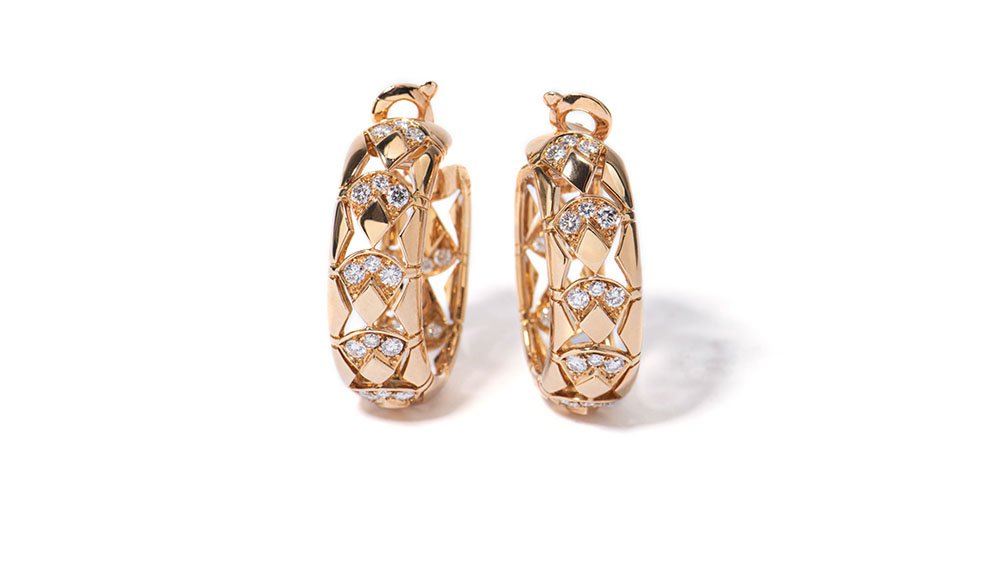
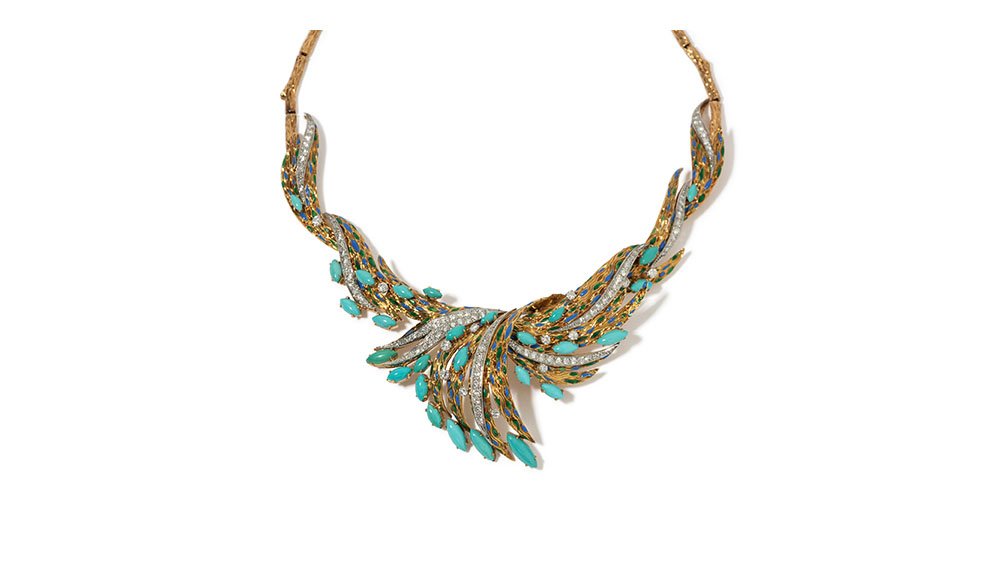

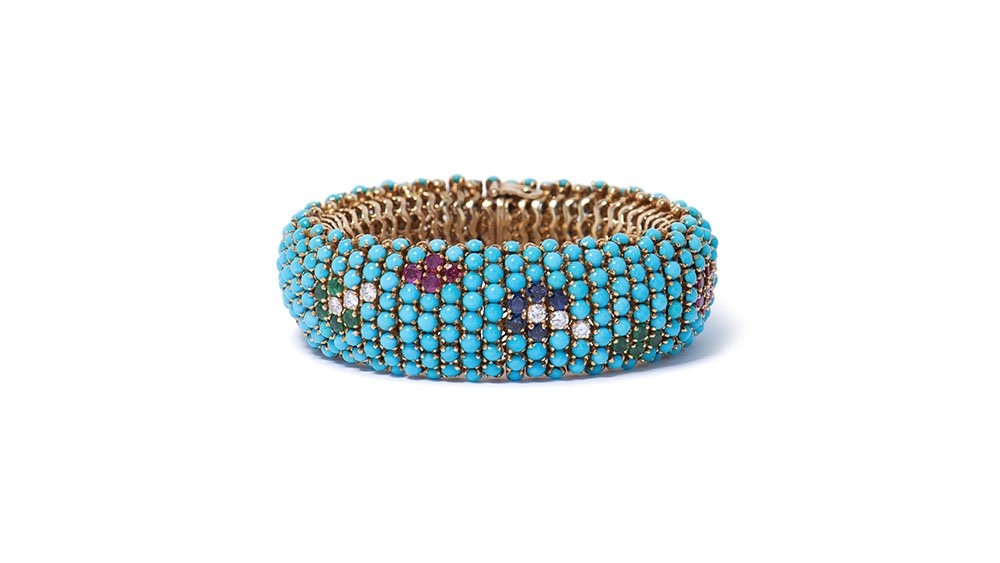
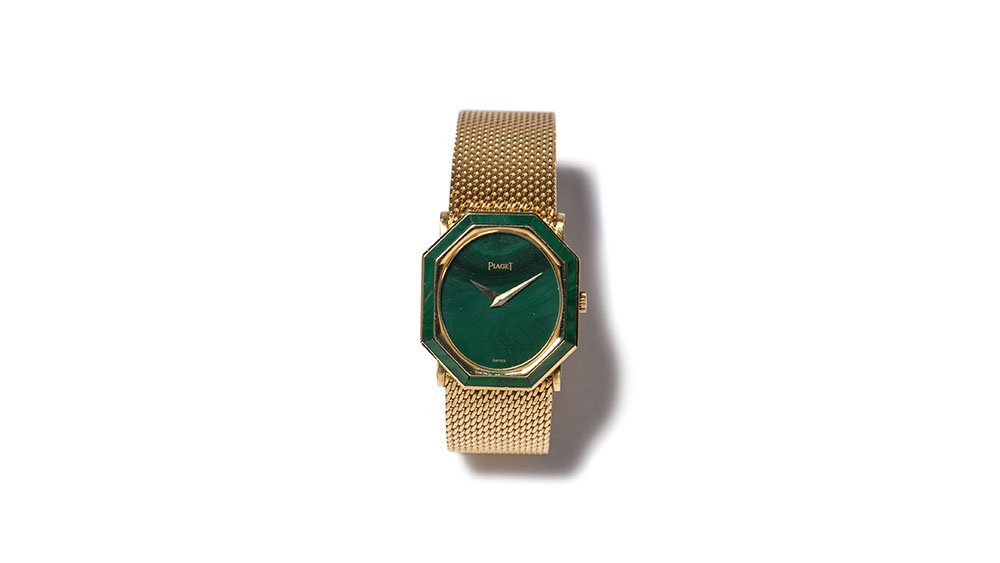
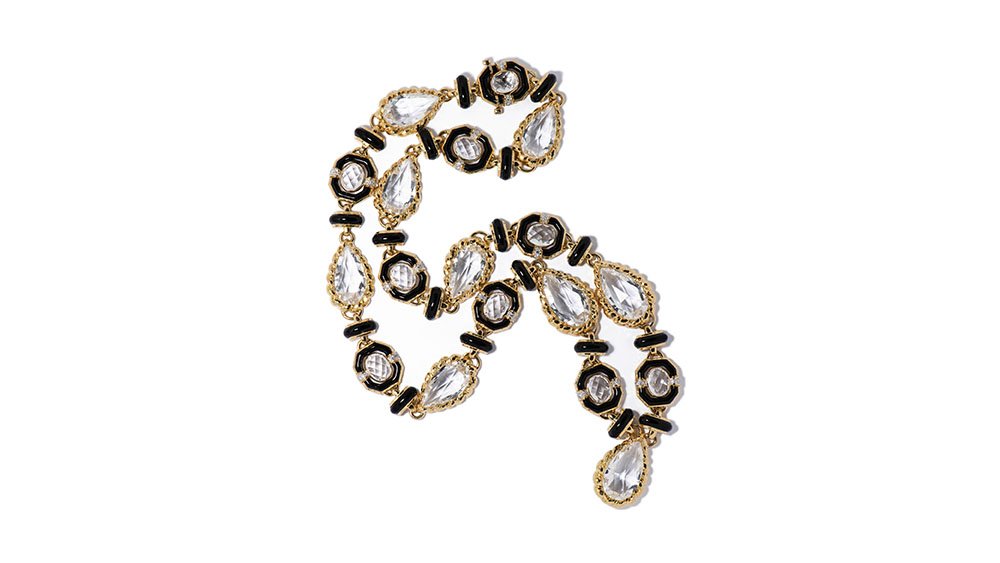
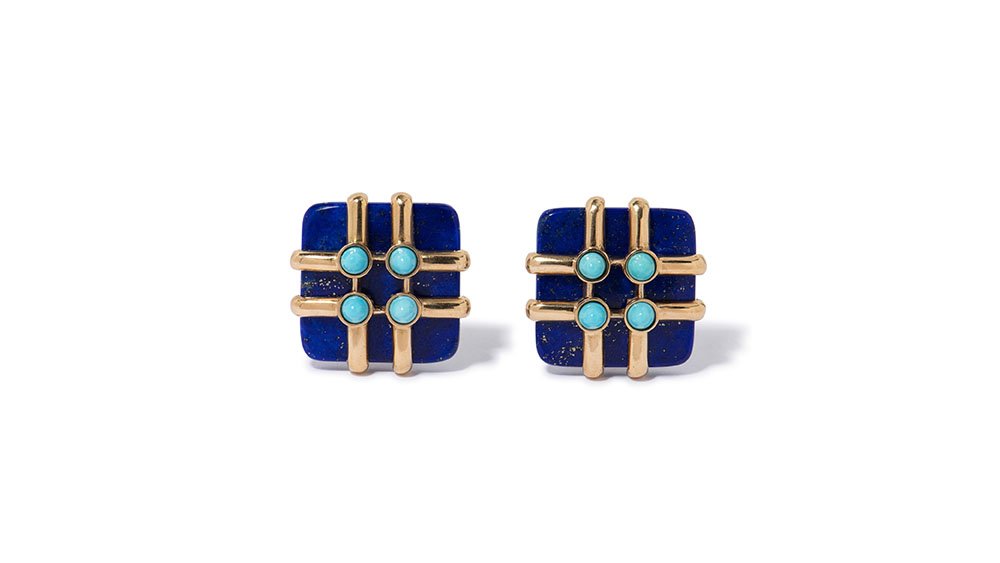
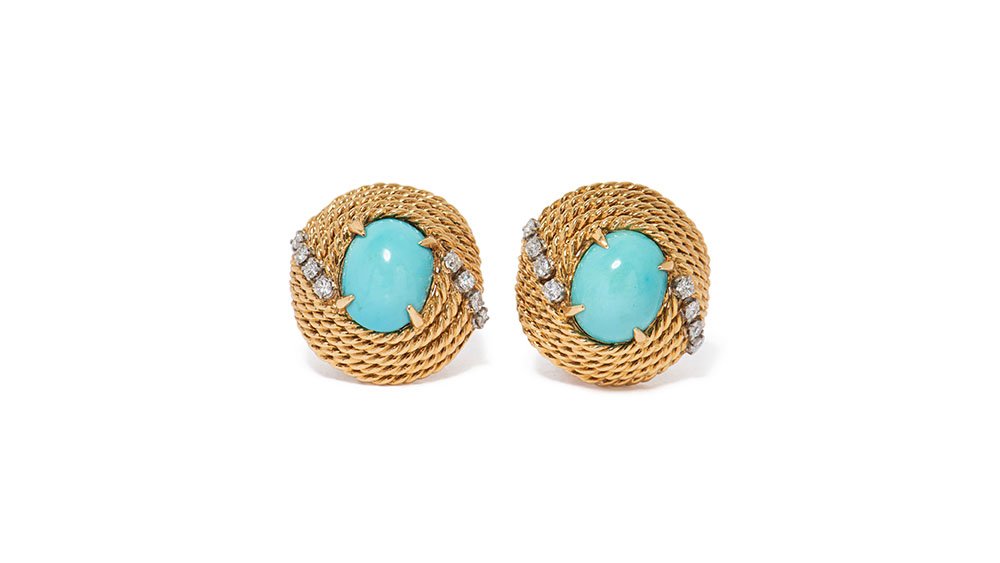
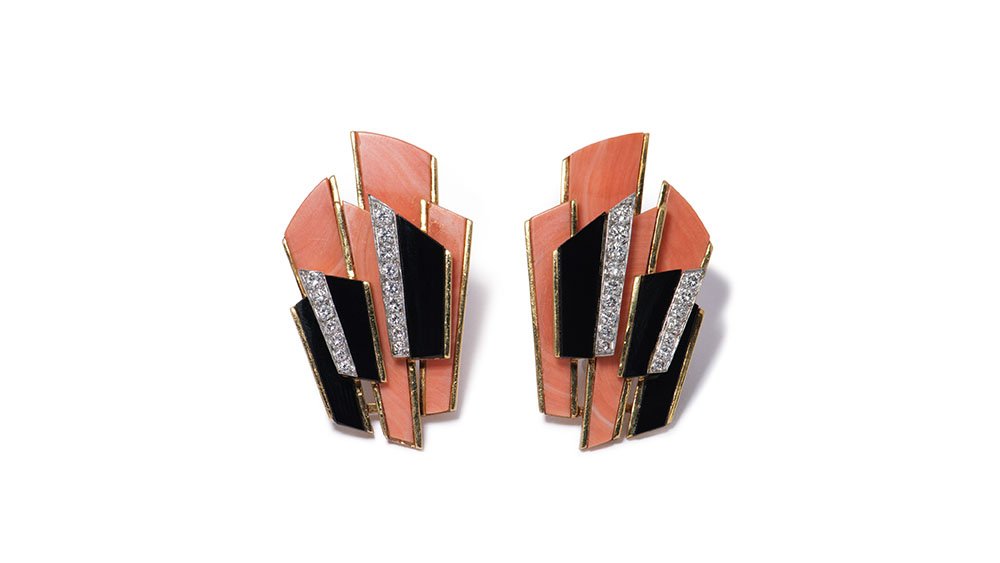

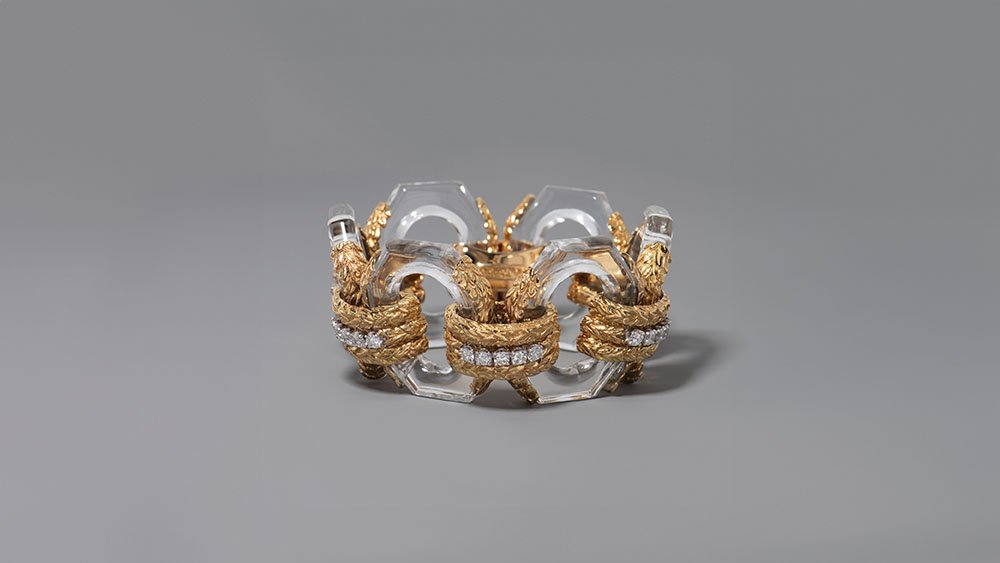
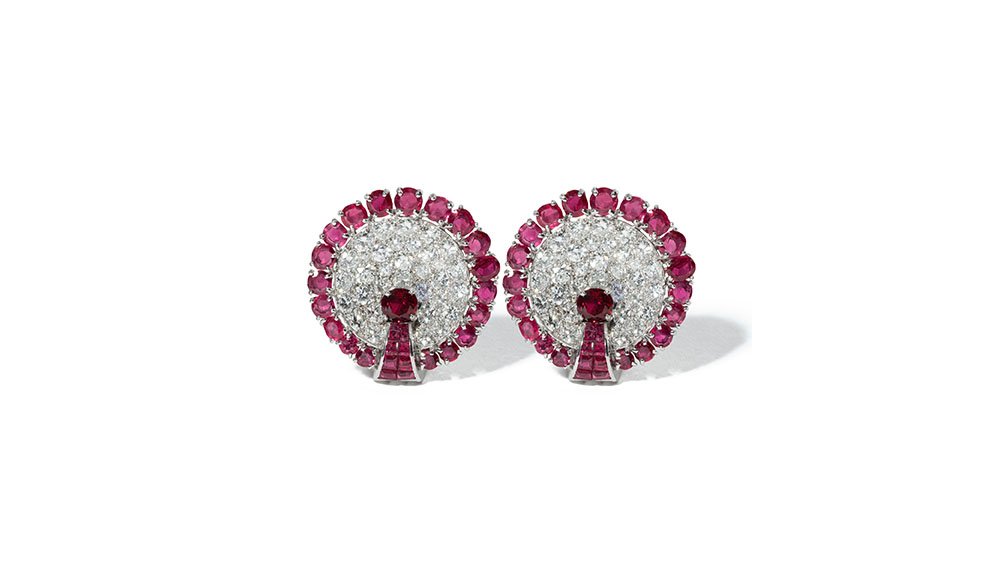
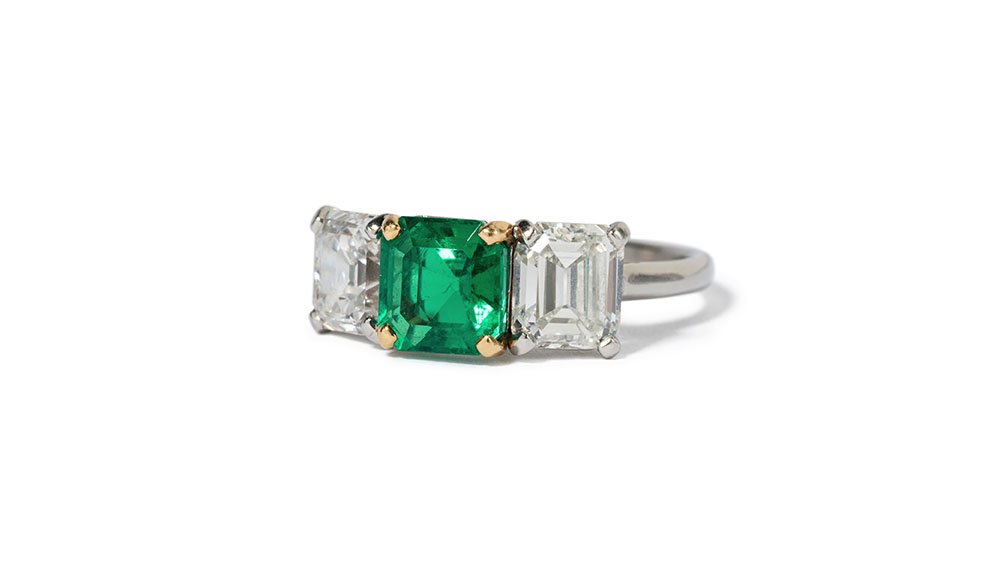
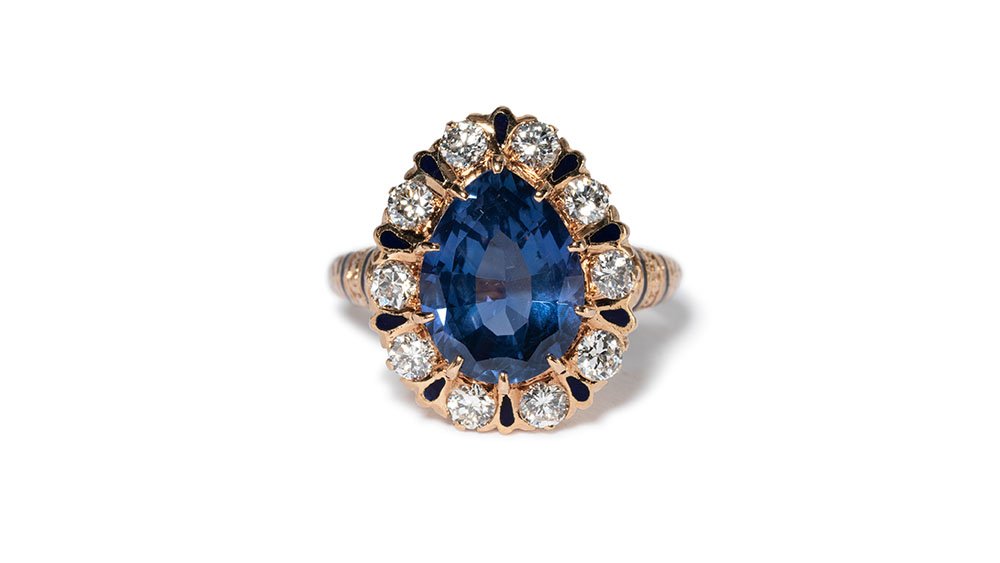
Favored materials: Gold, pearls, diamonds, enamel, Lapis.
Style differentiators: Large cocktail rings; large, colorful stones; statement pieces; gold openwork; textured brushed metal; matching sets; clip-on earrings; abstract designs; modernist styles — starburst, sweeping lines, flora, fauna.
Gemstone and Setting Styles
Gemstones are a captivating facet of estate jewelry, and their presence often reflects the trends of their respective periods. From the regal elegance of sapphires to the fiery allure of rubies, different eras favored different gems. The settings in which these gems are placed also play a crucial role in dating antique and vintage jewelry. Prong settings, bezel settings, and pavé settings each have their own histories and connotations.
Antique and Vintage Gemstones: Treasures of the Ages
Estate jewelry is a kaleidoscope of gemstone variety, each type carrying its own allure and history. The selection of gemstones is often aligned with societal trends and cultural influences. For instance:
Sapphires and Royalty: Sapphires, with their deep blue allure, were often favored by royalty and symbolized wisdom and nobility. They were popular during the Victorian (1820-1901) and Edwardian (1901-1910) eras, making appearances in rings, brooches, and pendants.
Romantic Rubies: Rubies, representing love and passion, frequently adorned jewelry from the Art Deco and Retro periods. Their vibrant red hue added a pop of color to intricate designs.
Emerald Elegance: Emeralds, known for their lush green color, were cherished for their calming qualities. Heavily showcased in the Art Nouveau and Art Deco periods, emeralds are often celebrated for their association with nature.
Pearls of Purity: Pearls, embodying purity and sophistication, were a hallmark of the Art Nouveau era. Strands of pearls and delicate metal settings were popular choices.
Setting Styles: Framing the Past in Elegance
While gemstones contribute to the beauty of estate jewelry, it's the setting styles that truly define the piece's character. Setting styles not only secure the gemstones but also serve as artistic expressions of their times. Here are some iconic setting styles that have left an indelible mark on the history of jewelry:
Prong Setting: A classic choice, prong settings use small metal claws to secure the gemstone. This setting style gained prominence during the Victorian era and remained popular through the 20th century.
Bezel Setting: The bezel setting encases the gemstone within a metal rim, offering protection and a sleek, modern appearance. It was prevalent in the Art Deco period, known for its clean lines and geometric designs.
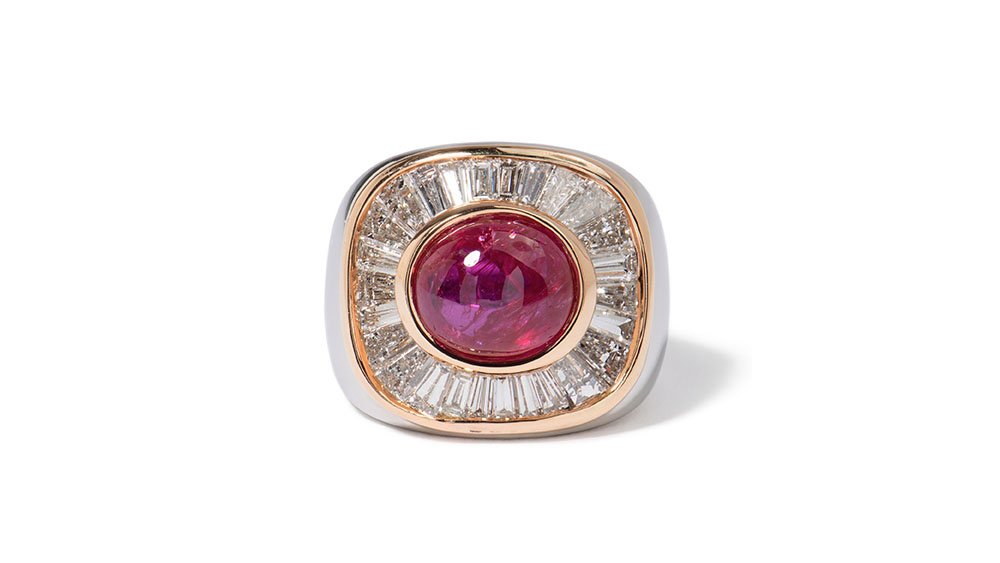
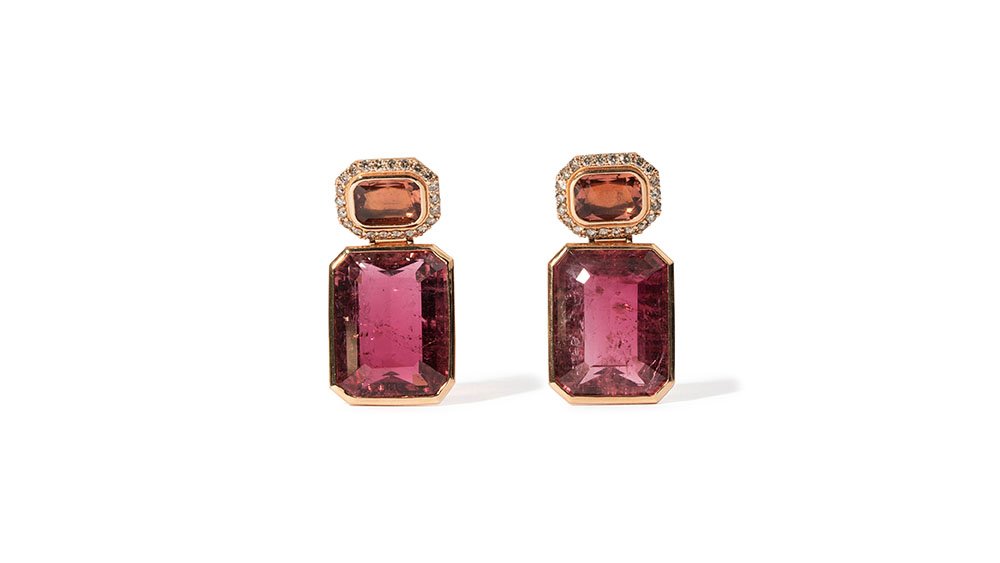
Pavé Setting: Pavé, meaning "paved” in French, involves closely setting small gemstones into metal, creating a dazzling surface for a “paved in gemstones” appearance. This technique flourished during the Art Nouveau era, adding a touch of glamor to delicate pieces.
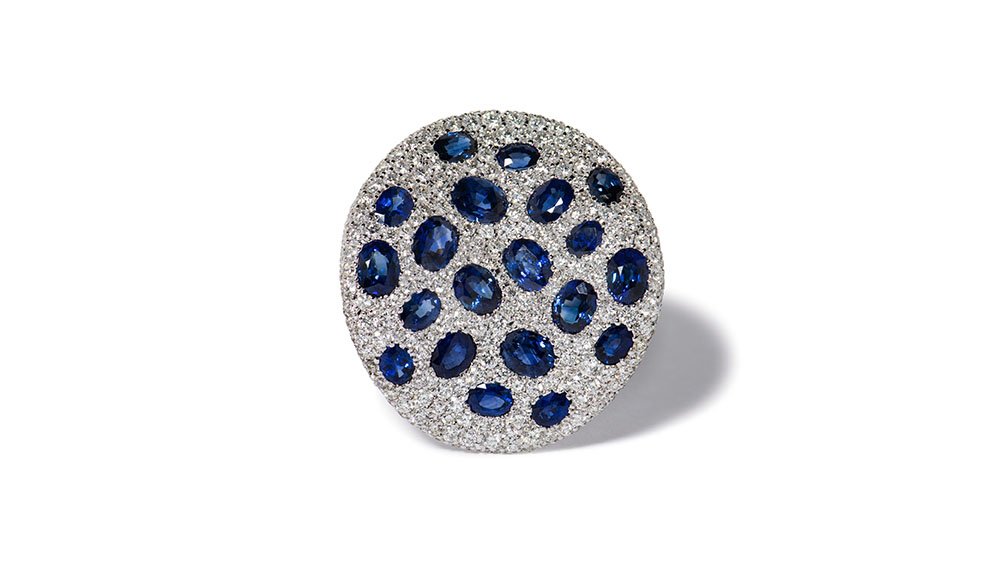
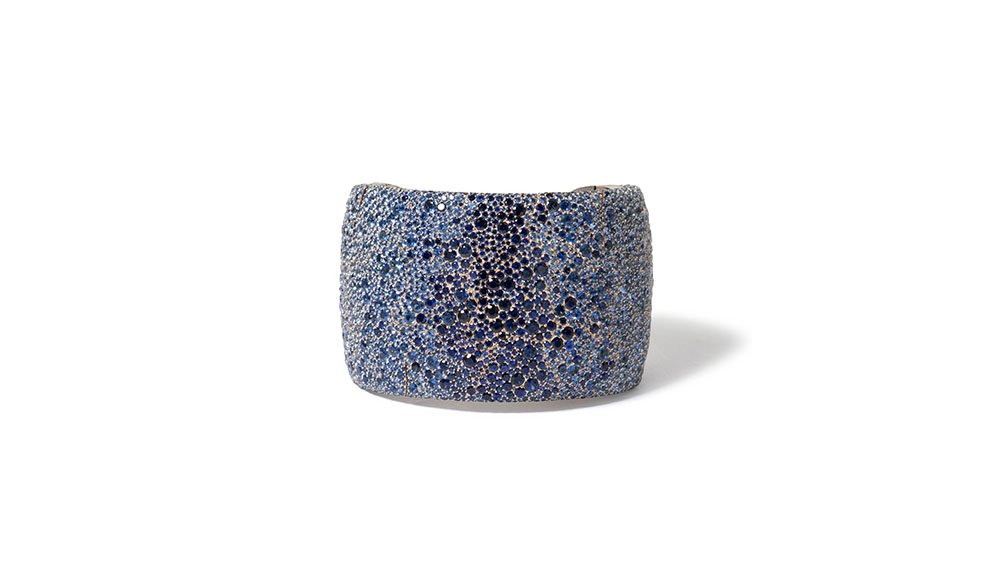
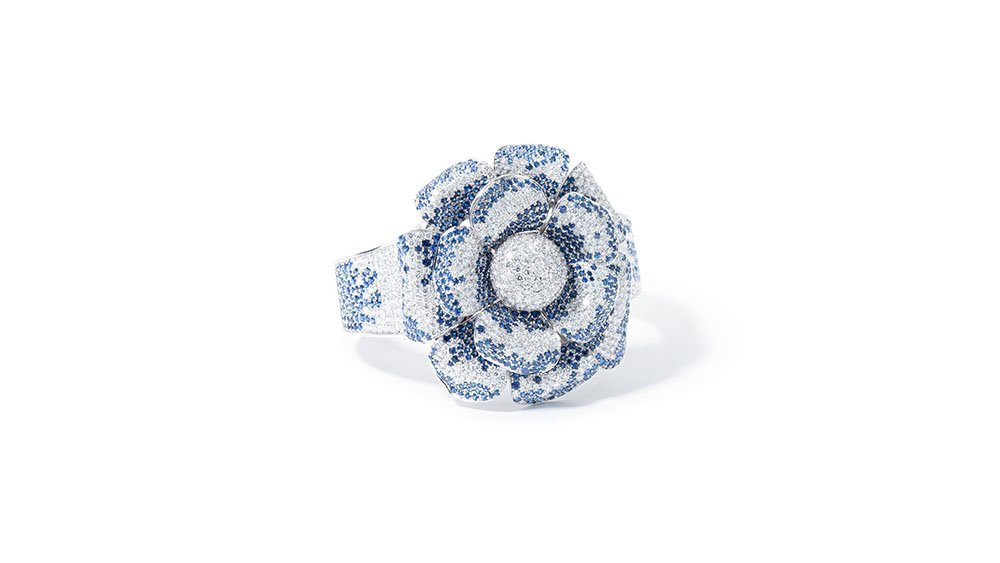
Halo Setting: The halo setting features a central gemstone encircled by smaller stones, creating a halo effect that enhances the centerpiece's brilliance. This style gained popularity during the Art Deco period, complementing its geometric aesthetic. A subset style of the halo setting is the ballerina mount, where the center stone is surrounded by tapered baguette diamonds.
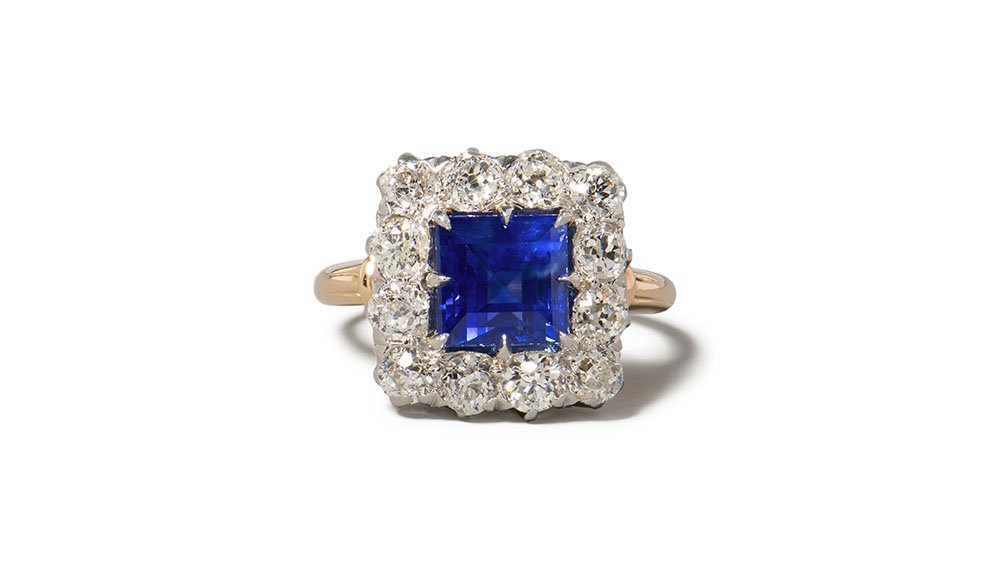
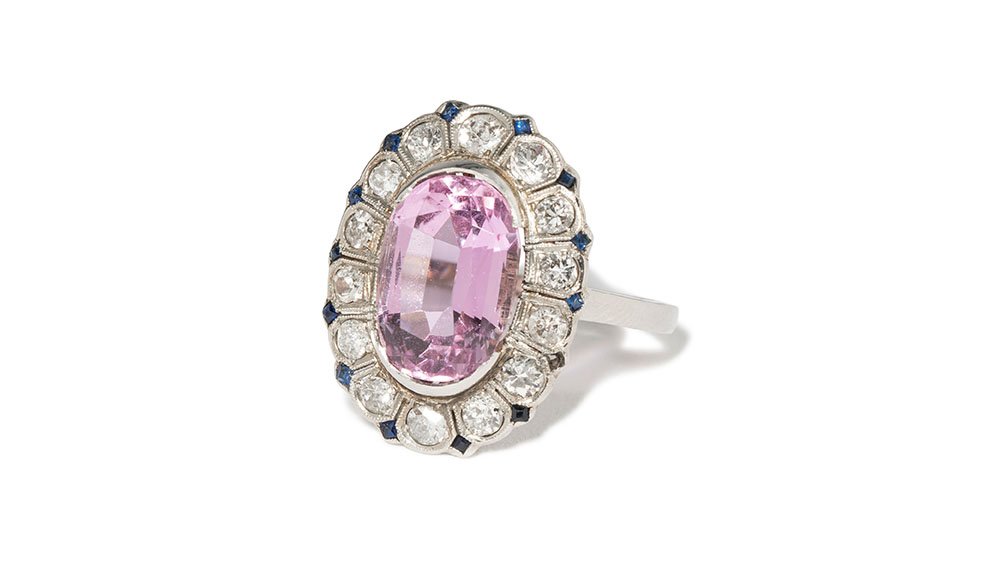
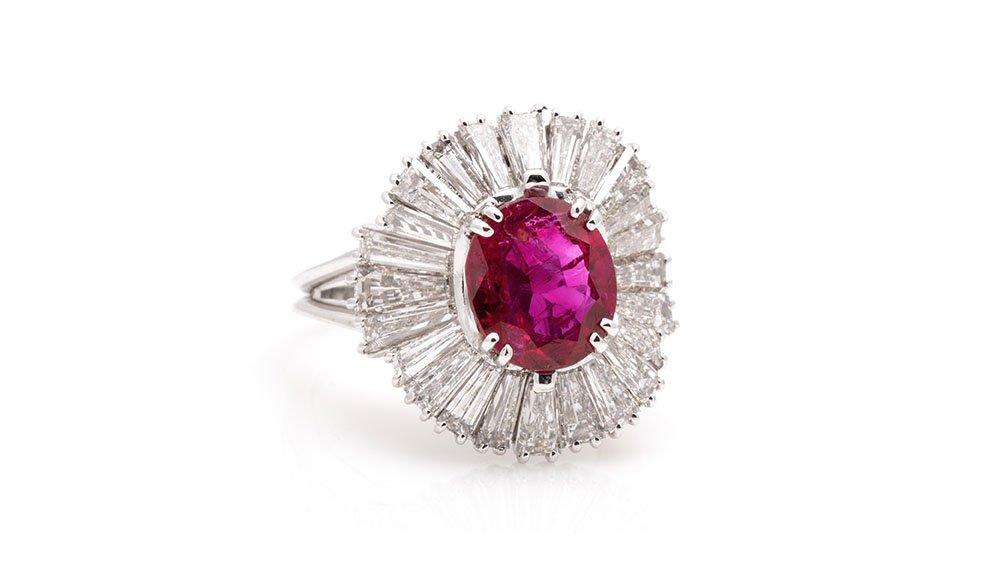
Collet Claw or “Serti Dressé” Setting: Widely used in England during the Georgian period (1714 to 1830), this setting features a diamond encircled in a blackened gold corolla, from which very high claws arise. This is also referred to as the Georgian cut-down setting.
Filigree Detailing: Filigree work involves intricate metal wire patterns that create a delicate lace-like effect. This technique was a hallmark of the Edwardian era, known for its romantic and feminine designs.
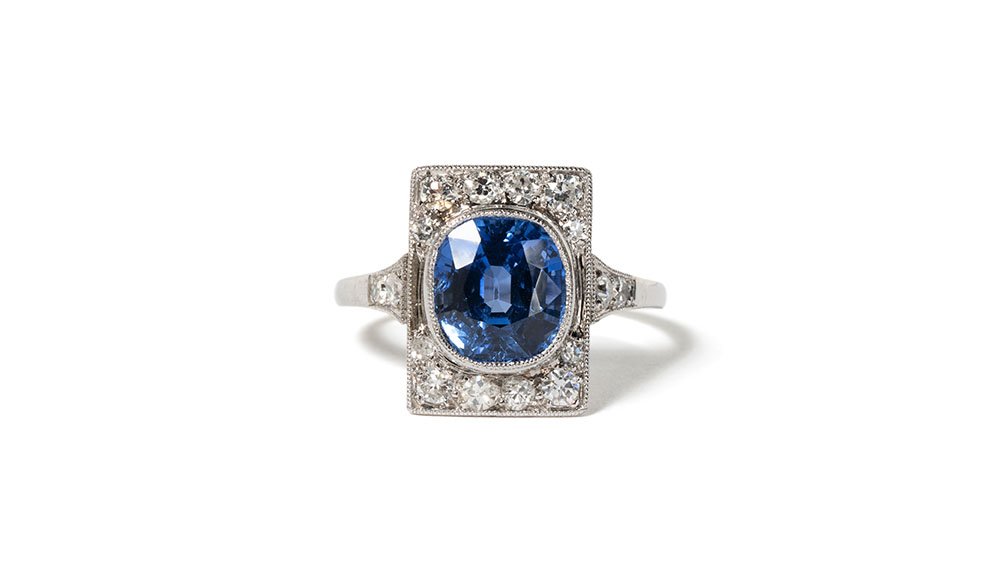
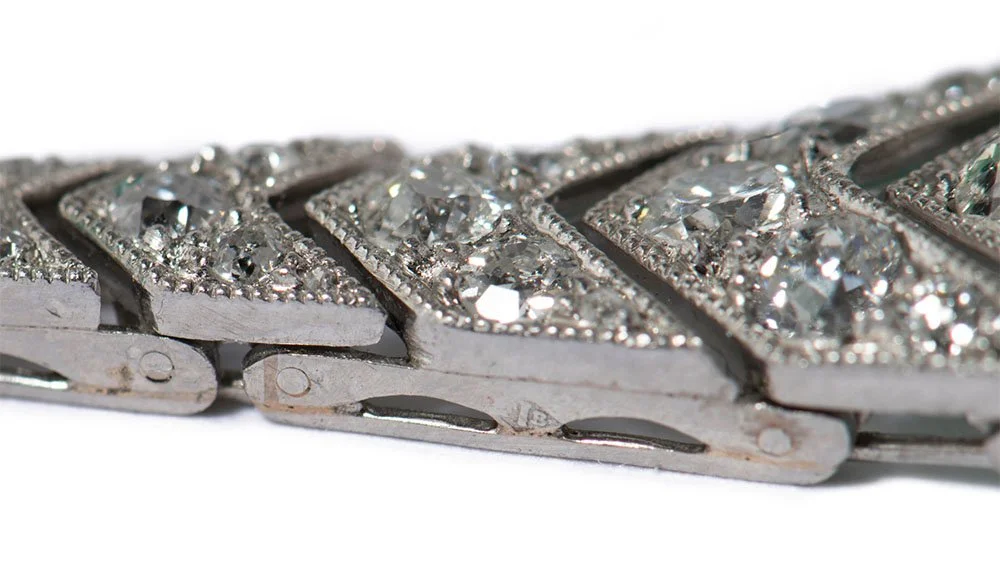
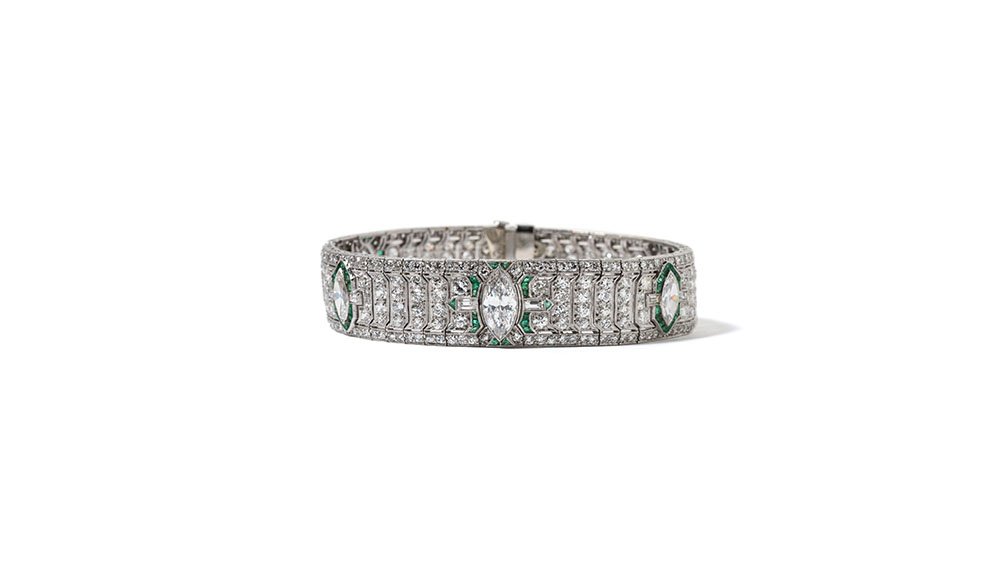
Provenance and Documentation
The authenticity of vintage jewelry often rests on its provenance — documentation that traces its journey through time. Unveiling the true value of antique and vintage jewelry goes beyond the glittering gems and intricate designs; it's about unearthing the stories these pieces carry. Provenance and documentation form an integral part of understanding the journey of each vintage treasure.
Provenance refers to the documented history of ownership and the path a piece has traveled through time. It might include records of previous owners, notable events, and even any restoration work that has been undertaken. These records help weave together a narrative that transcends the beauty of the piece, offering glimpses into the lives and eras it has touched.
By providing a tangible link to the past, provenance connects us to the legacy of the jewelry and adds an extra layer of significance to its intrinsic value. Whether through certificates of authenticity, historical records, or family anecdotes, the stories behind these treasures come to life, enriching the experience of owning and cherishing vintage jewelry.
Windsor places a premium on preserving the histories of these pieces, ensuring that their legacy is not lost. With a commitment to transparency and authenticity, we guarantee that every piece in our collection that comes with a story will be carried into its new life.
Your Timeless Legacy
Navigating the world of vintage jewelry can be a daunting endeavor, but with Windsor Jewelers by your side, you're not alone. Our team of experts, steeped in knowledge and passion, stand ready to assist you in evaluating and selling your vintage pieces so that their legacy may live on.
Authenticity and expertise matter. Windsor Jewelers carefully curates a collection that celebrates the stories and beauty of the past. As you embark on the journey to discover the value and significance of your heirloom jewelry, we invite you to step into our world — a world where every piece becomes a legacy, every story cherished, and every moment celebrated.
Ready to Discover the Real Value of Your Vintage Jewelry?
Unlock the secrets of your heirloom jewelry with Windsor Jewelers. Contact us today and embark on a journey that transcends time, where the extraordinary awaits to be uncovered.
Contact us through our online form or call us at +1.212.262.0500 to discover the value of your vintage jewelry today.



